Pesvedzero Isingazivikanwe / Influence of the Unknown
Terrence Musekiwa
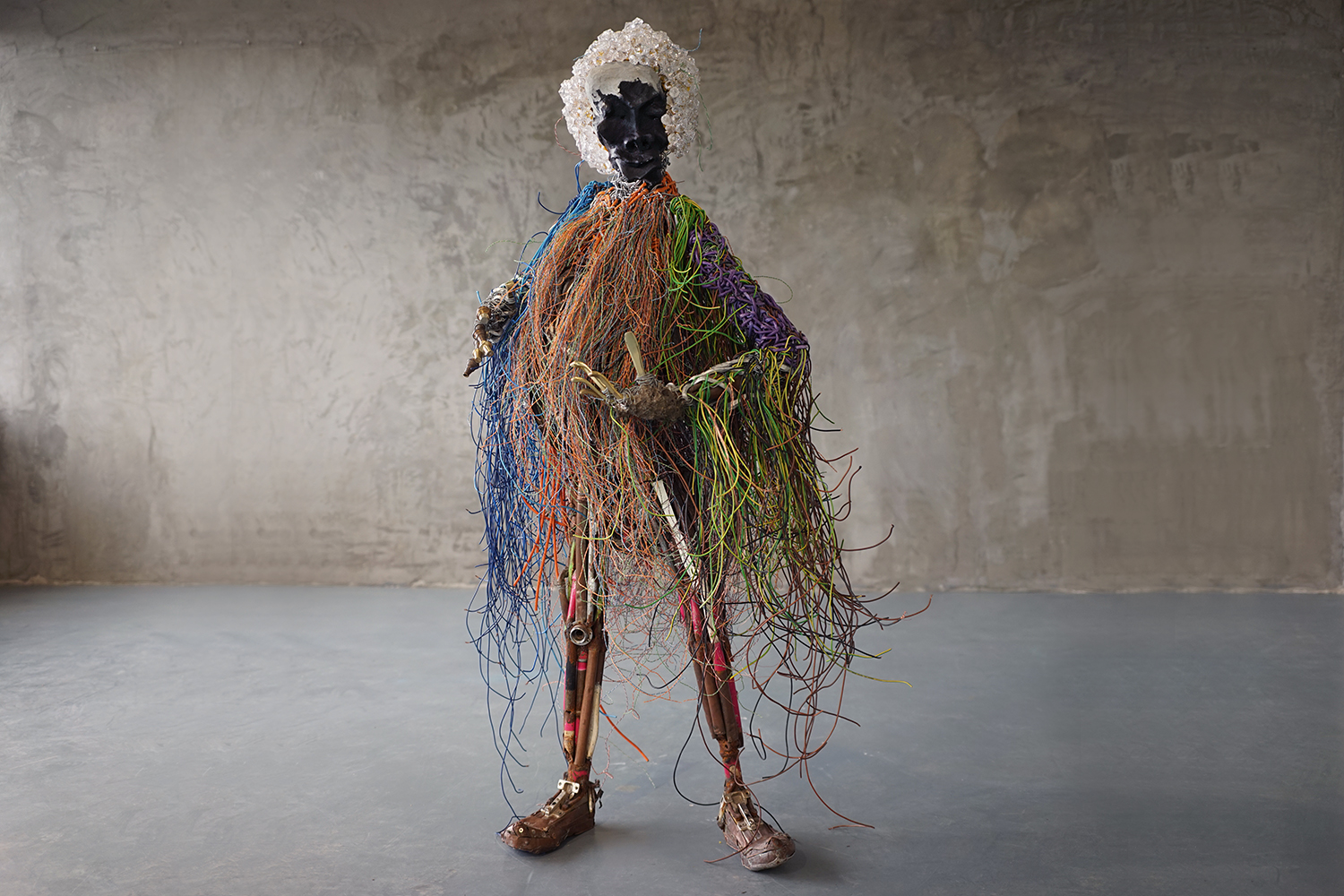
Terrence Musekiwa
Mukuru (Elder), 2023
Springstone, internet cables, brass door handles, an iron bike, crystal plastic beads, steal, aluminum, copper
162 x 98 × 61 cm
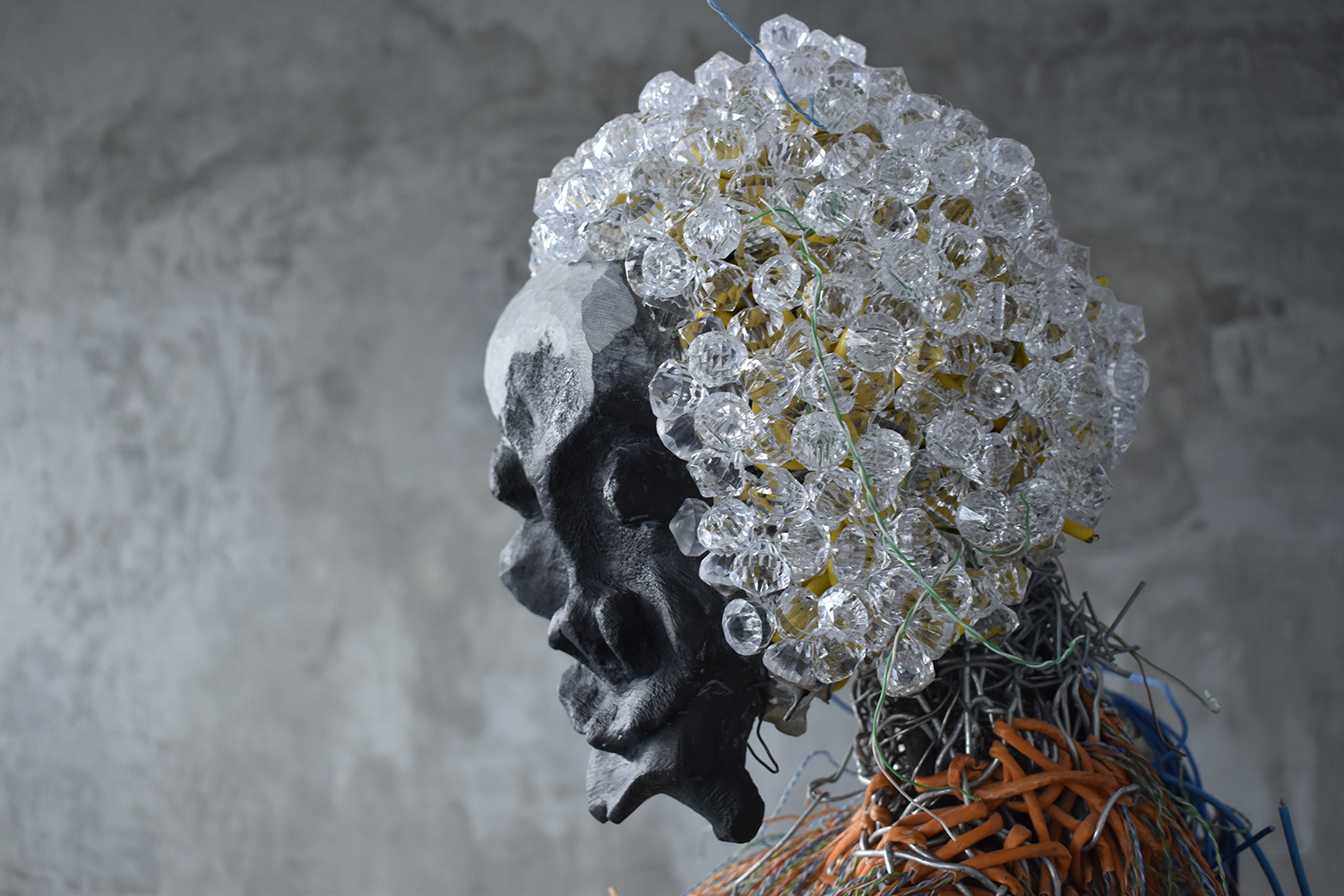
Terrence Musekiwa
Mukuru (Elder), 2023
Detail
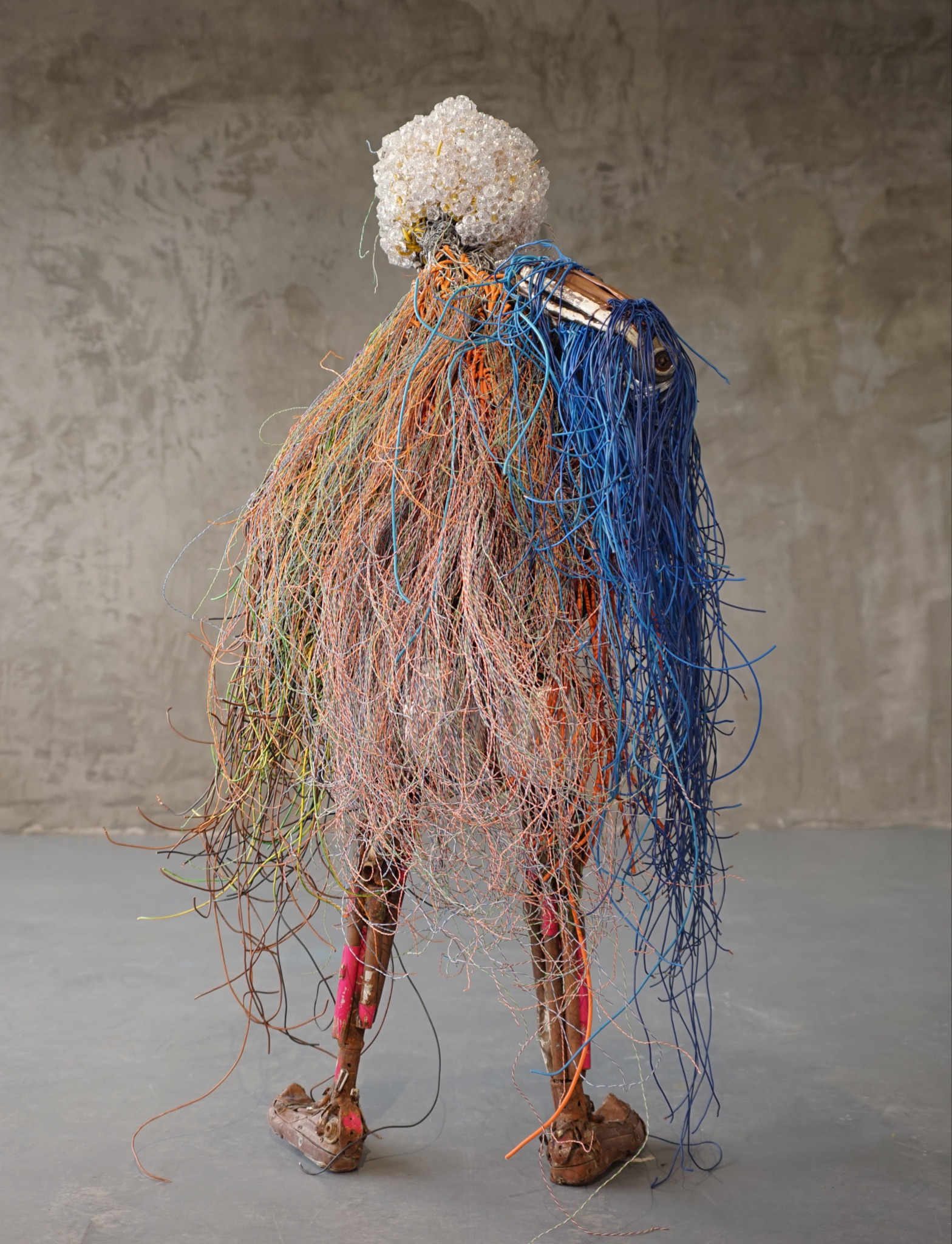
Terrence Musekiwa
Mukuru (Elder), 2023
Springstone, internet cables, brass door handles, an iron bike, crystal plastic beads, steal, aluminum, copper
162 x 98 × 61 cm
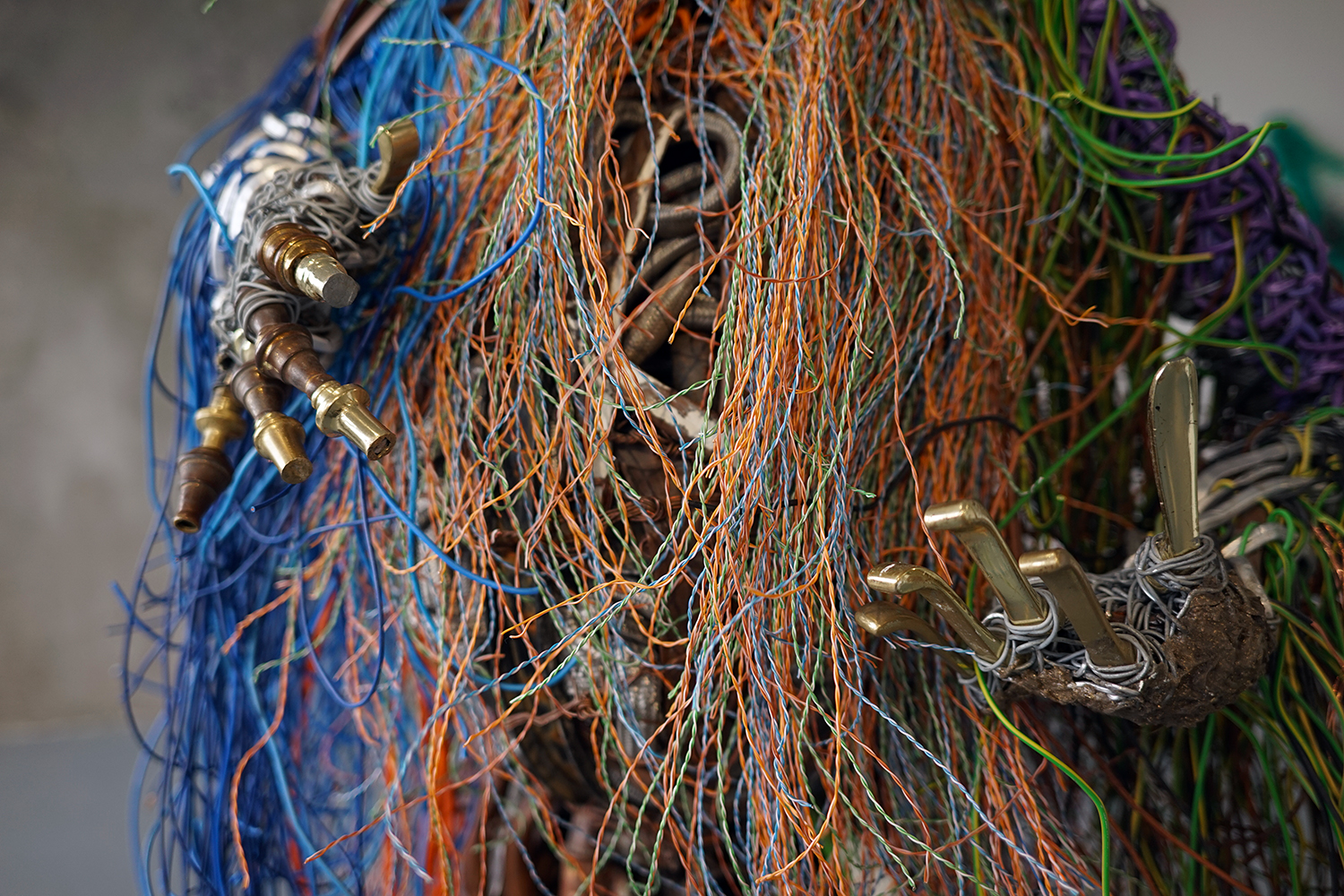
Terrence Musekiwa
Mukuru (Elder), 2023
Detail
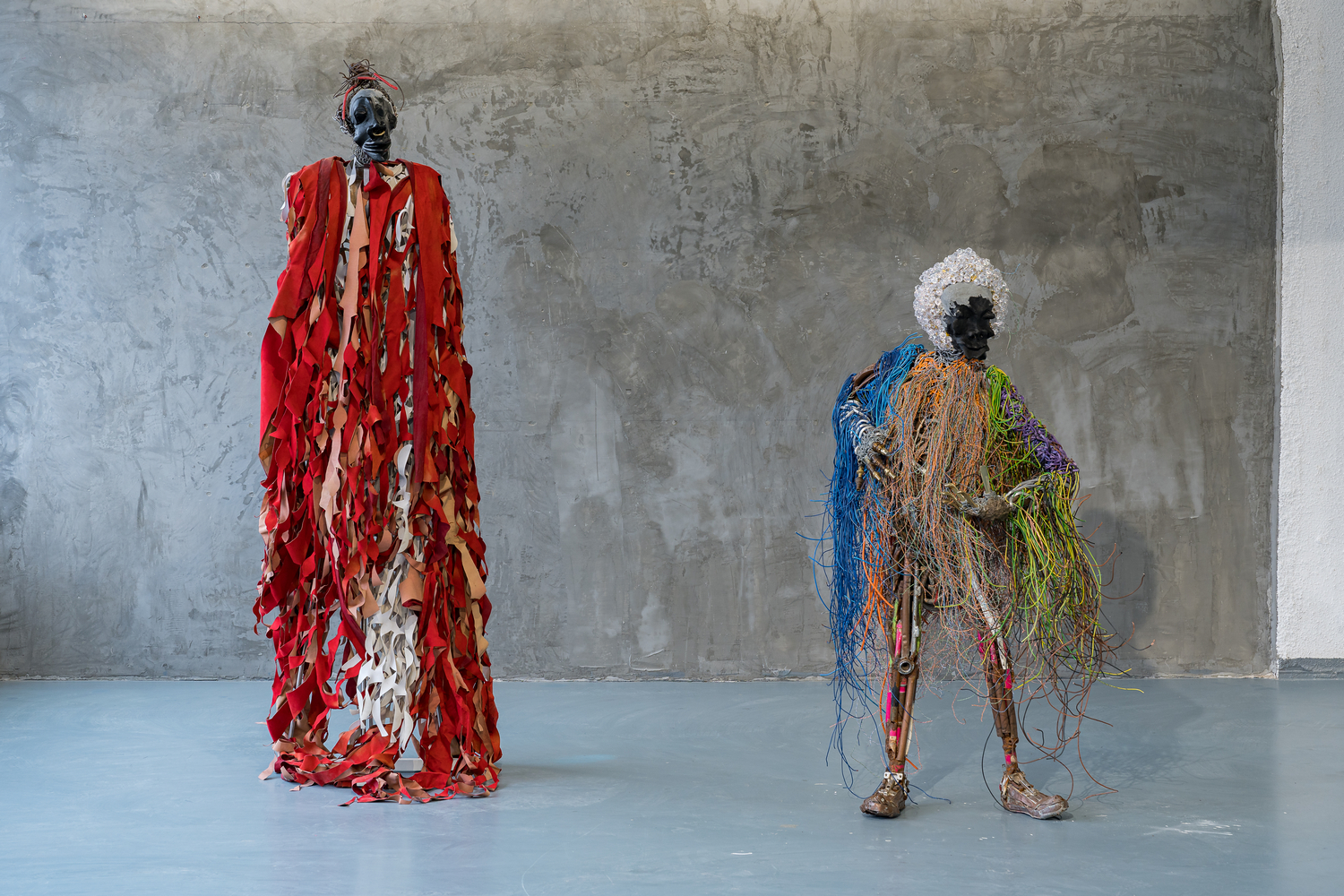
Terrence Musekiwa
Pesvedzero Isingazivikanwe / Influence of the Unknown, 2023
Install View
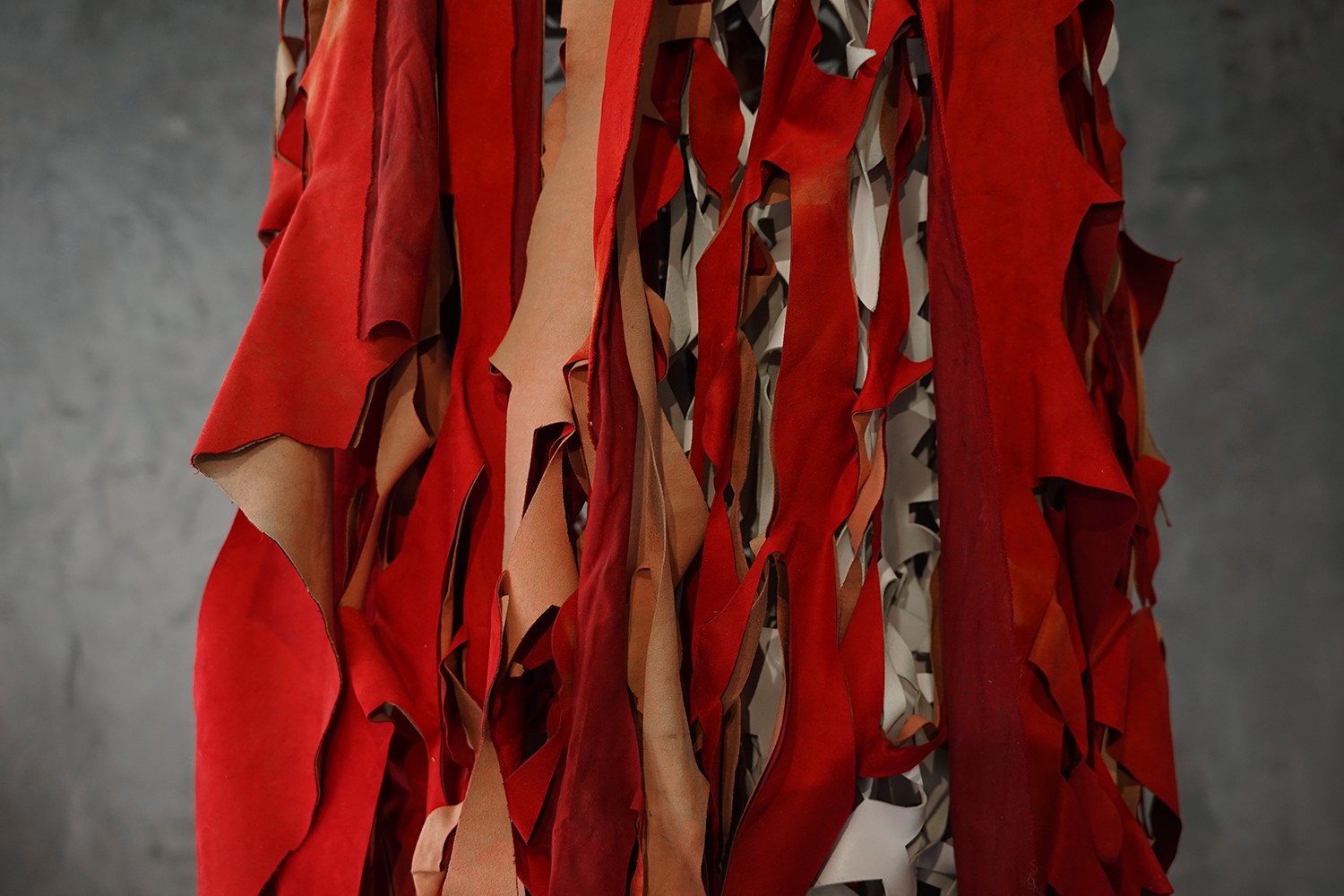
Terrence Musekiwa
Varatidzi Vezvakavandika_1 (Mystical Revealers), 2021
Springstone, tire rubber, silk, felt, synthetic bristles,
cotton and copper rope.
230 × 60 × 40 cm
Detail
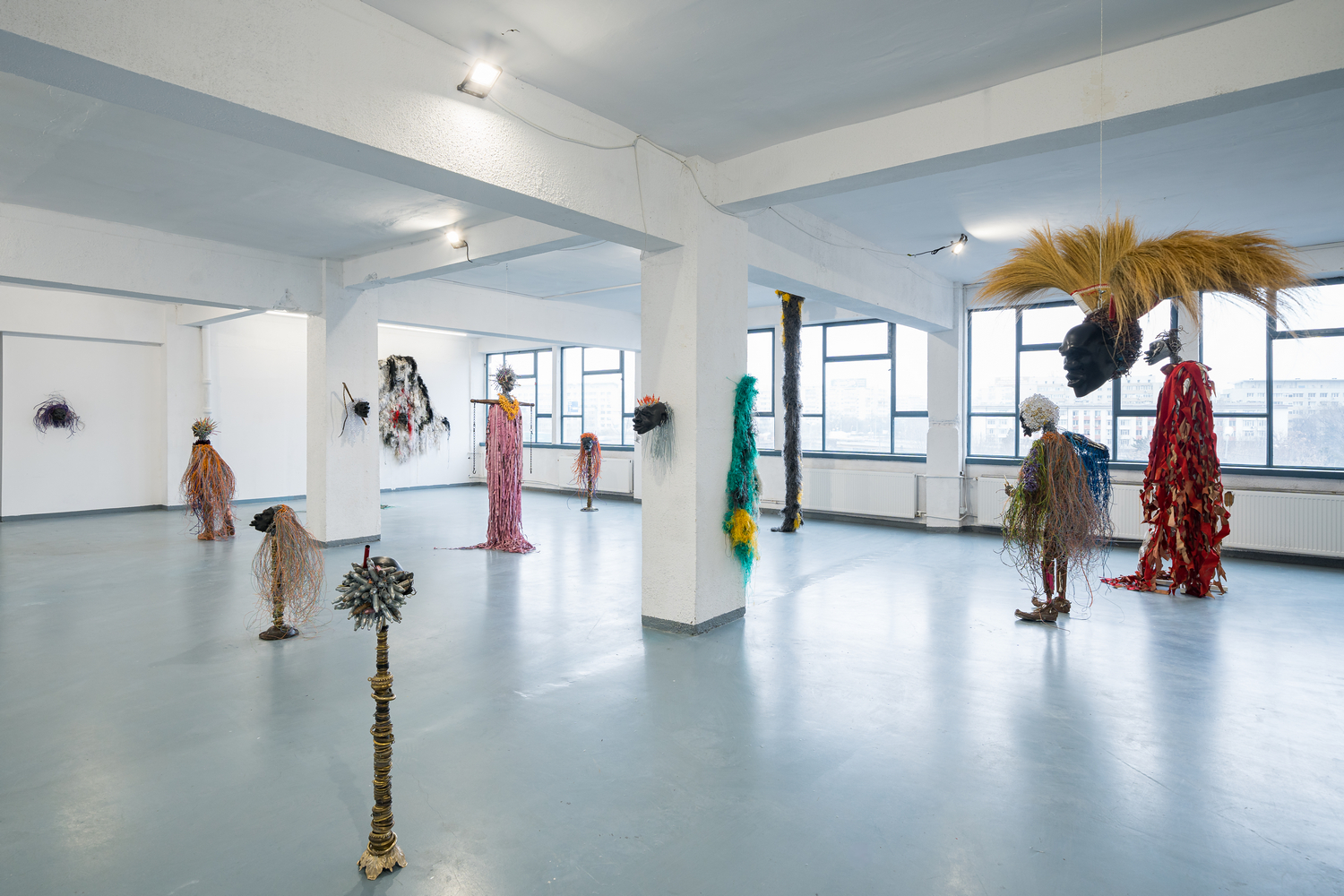
Terrence Musekiwa
Pesvedzero Isingazivikanwe / Influence of the Unknown, 2023
Install View
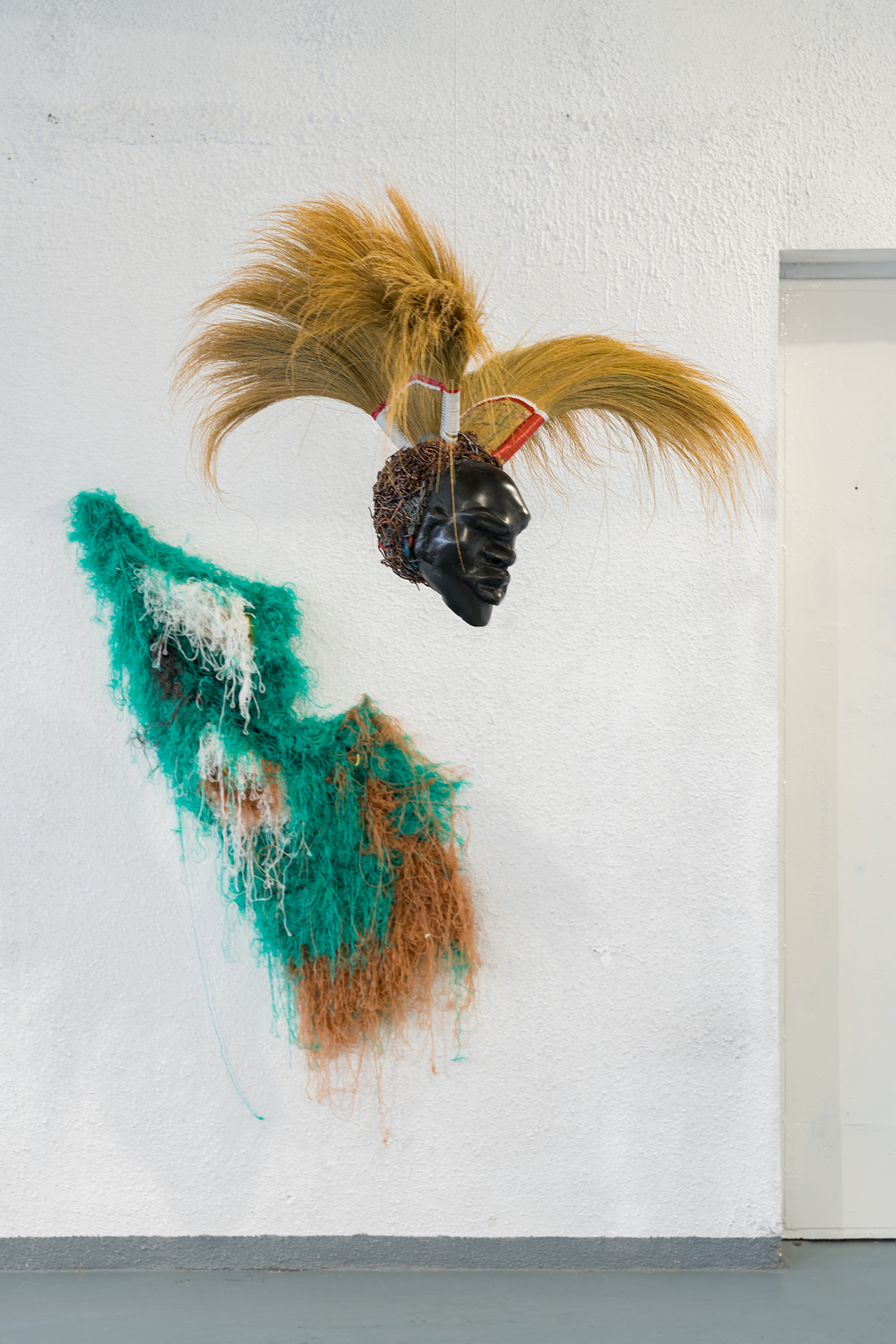
Terrence Musekiwa
Pesvedzero Isingazivikanwe / Influence of the Unknown, 2023
Install View
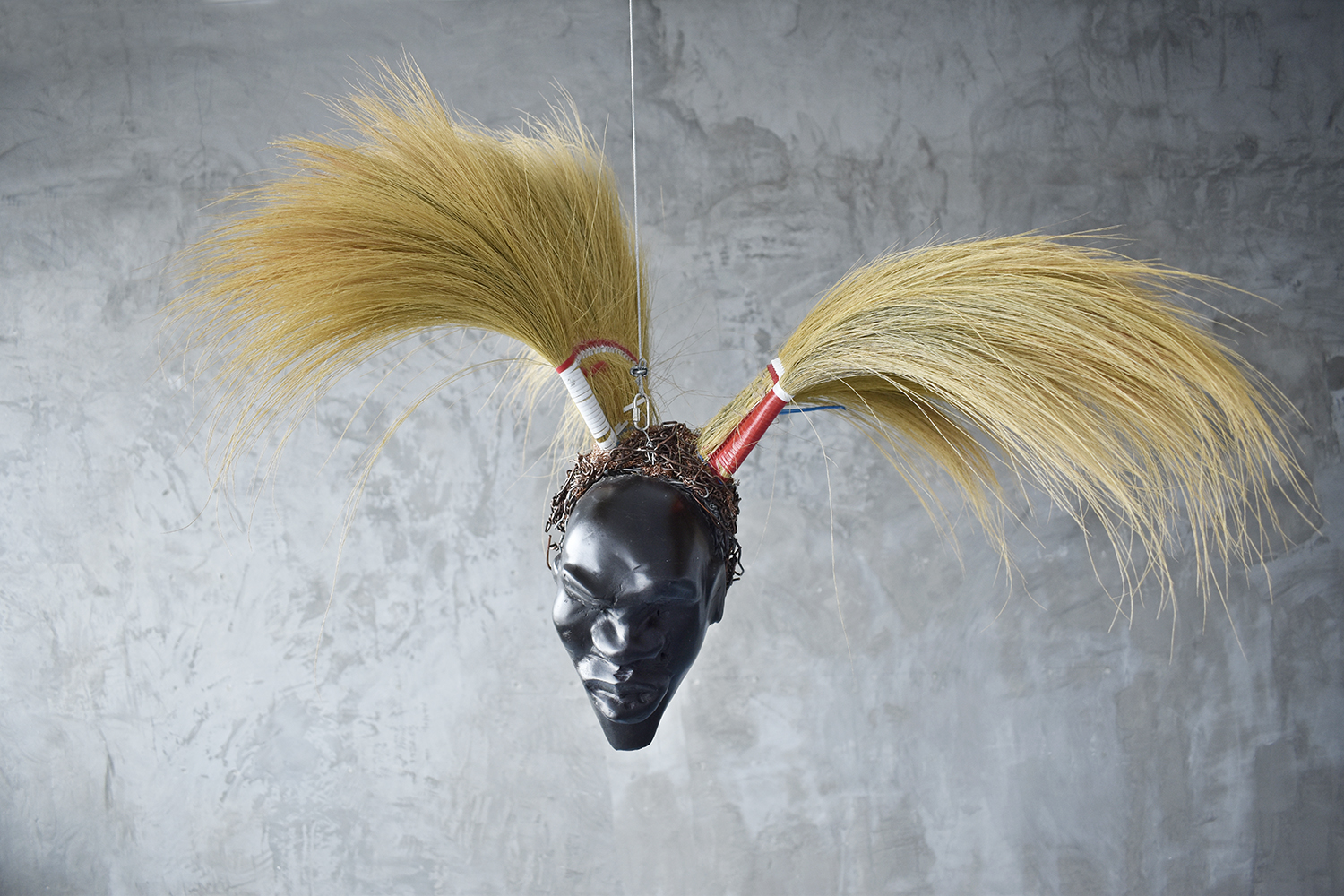
Terrence Musekiwa Muridzi wembariro, 2023
Springstone, dried grass, copper, aluminum and plastic
60 × 77 × 50 cm (24 × 30 × 20 in)
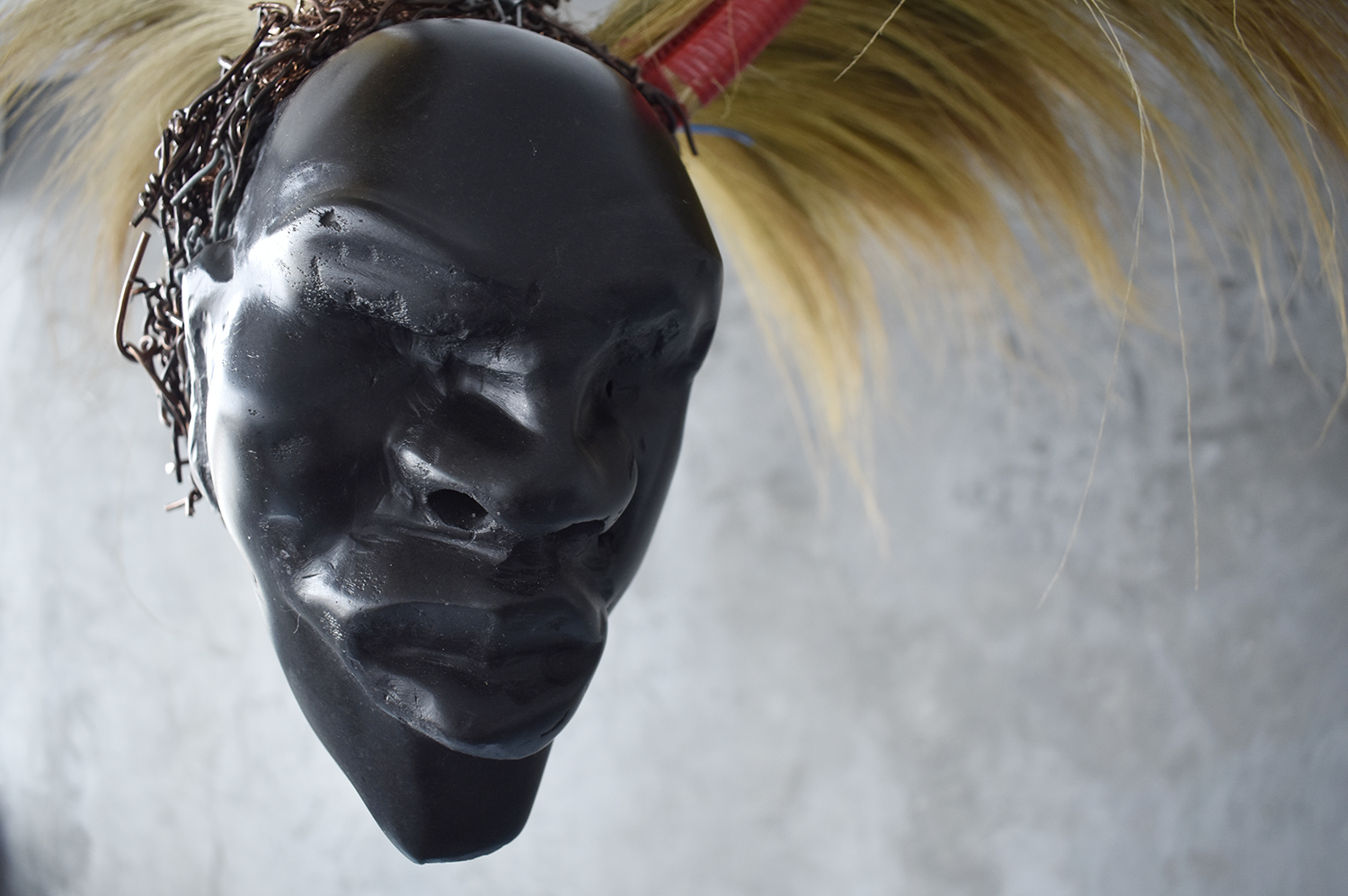
Terrence Musekiwa Muridzi wembariro, 2023
Detail
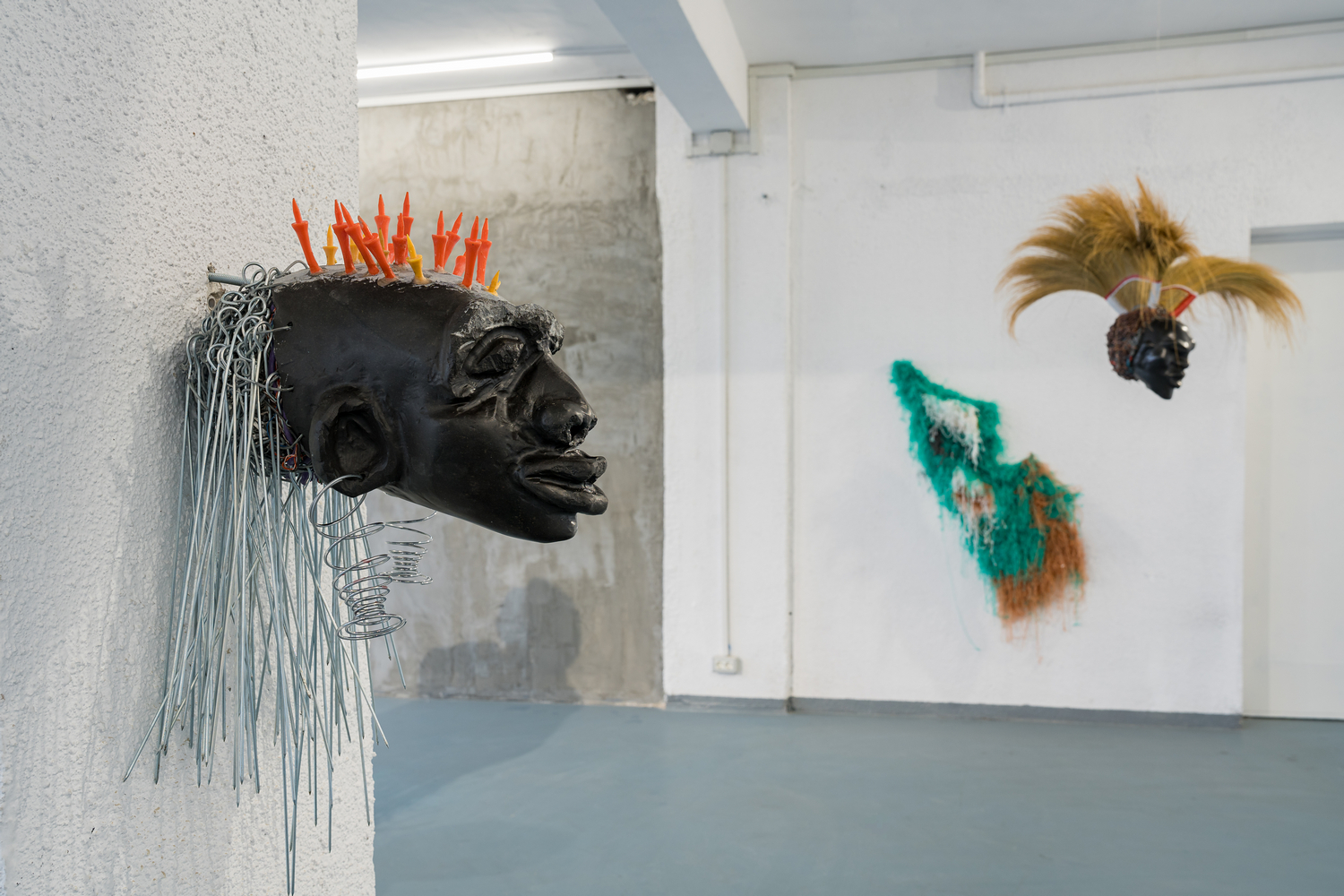
Terrence Musekiwa
Pesvedzero Isingazivikanwe / Influence of the Unknown, 2023
Install View
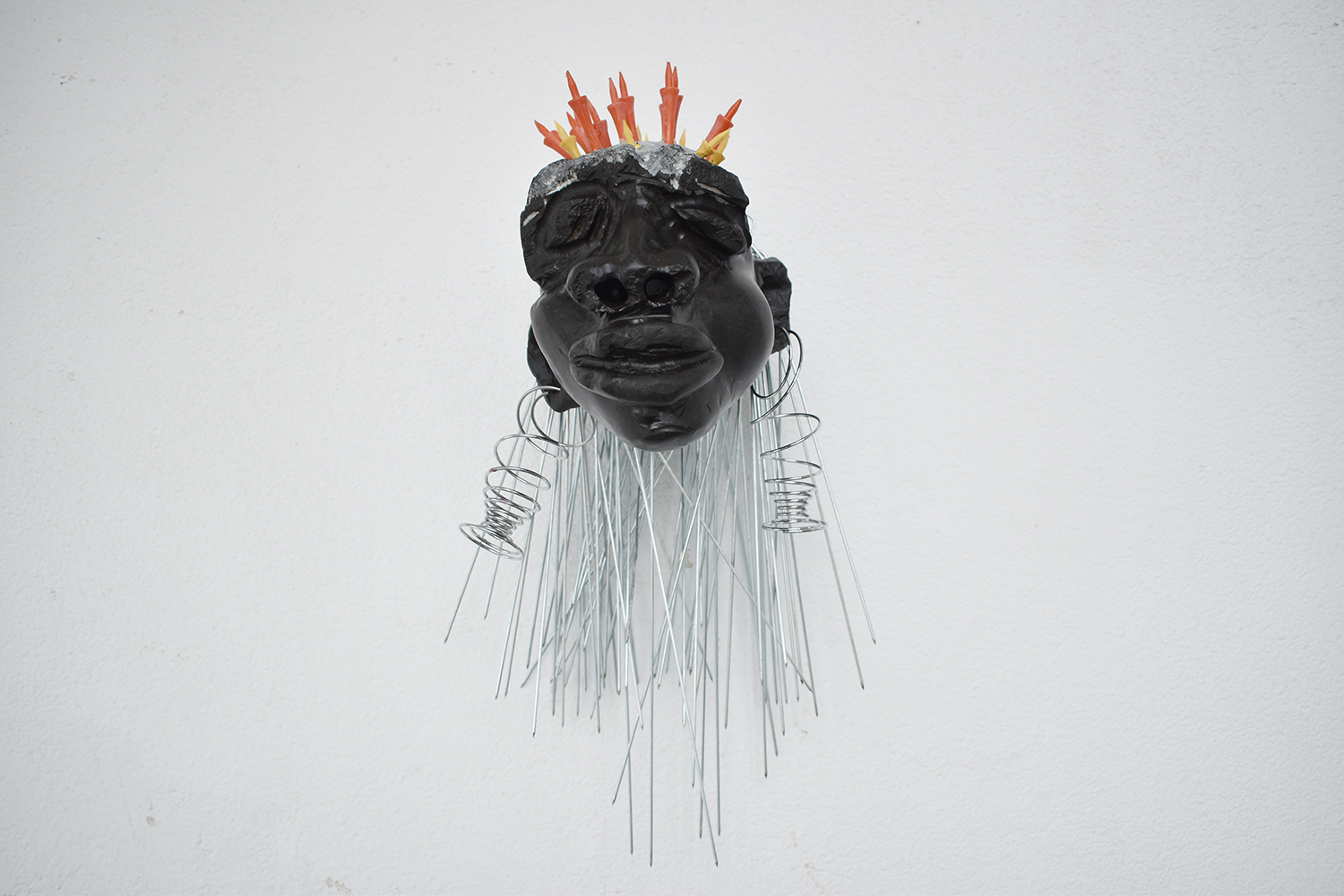
Terrence Musekiwa
Wedonha, 2023
Springstone, aluminum,
metal skewers, plastic golf tees
47 x 24 × 39 cm
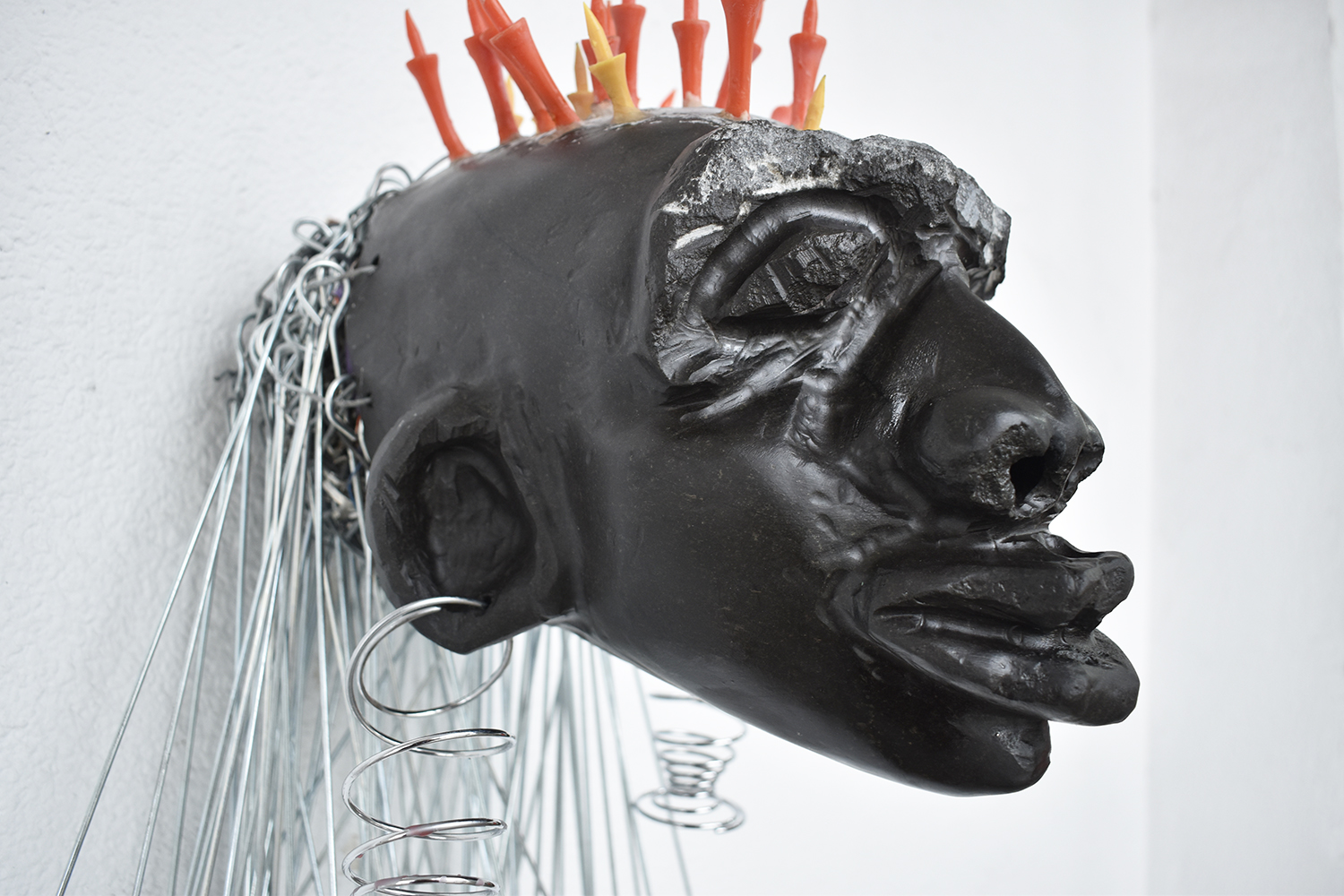
Terrence Musekiwa
Wedonha, 2023
Springstone, aluminum,
metal skewers, plastic golf tees
47 x 24 × 39 cm
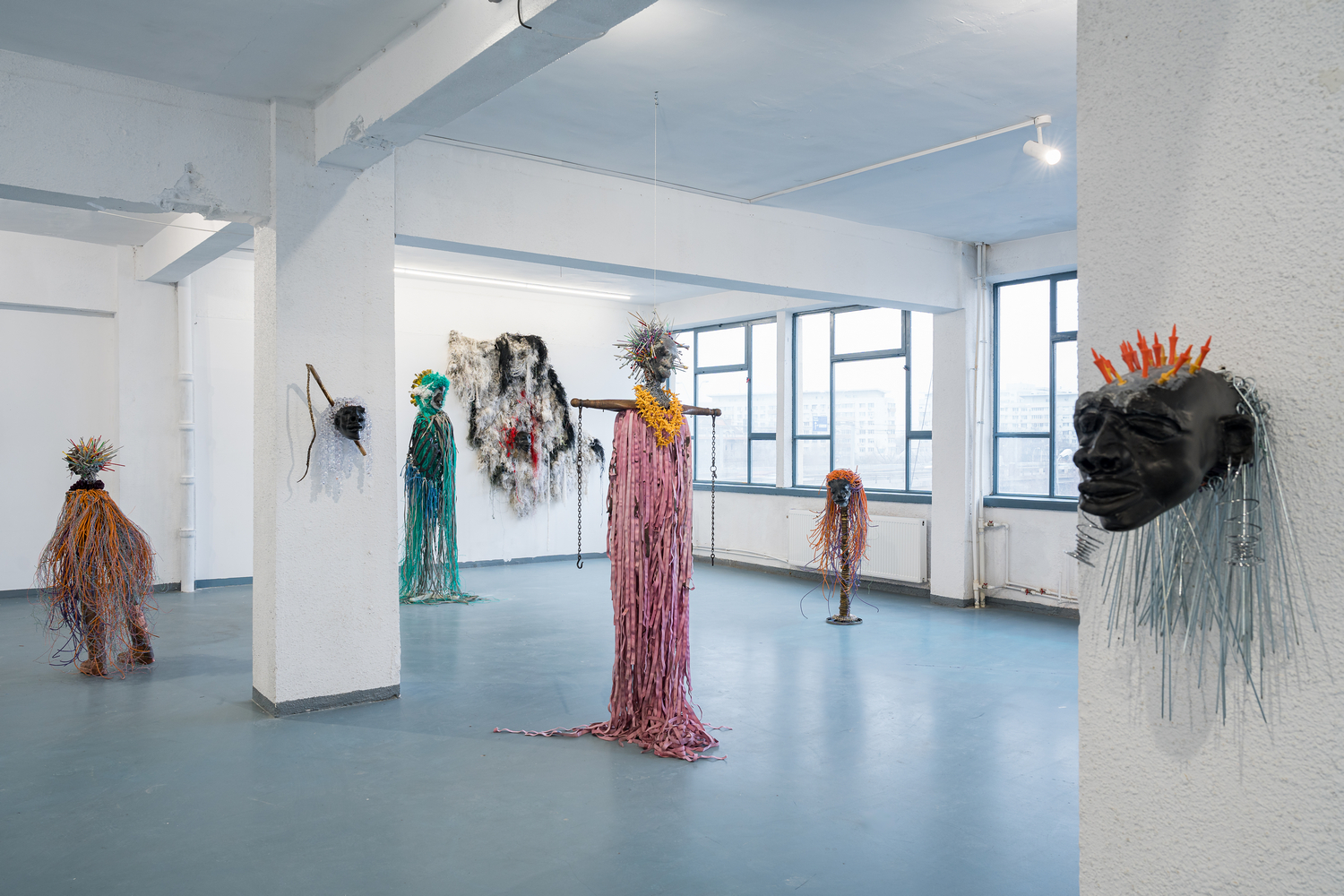
Terrence Musekiwa
Pesvedzero Isingazivikanwe / Influence of the Unknown, 2023
Install View
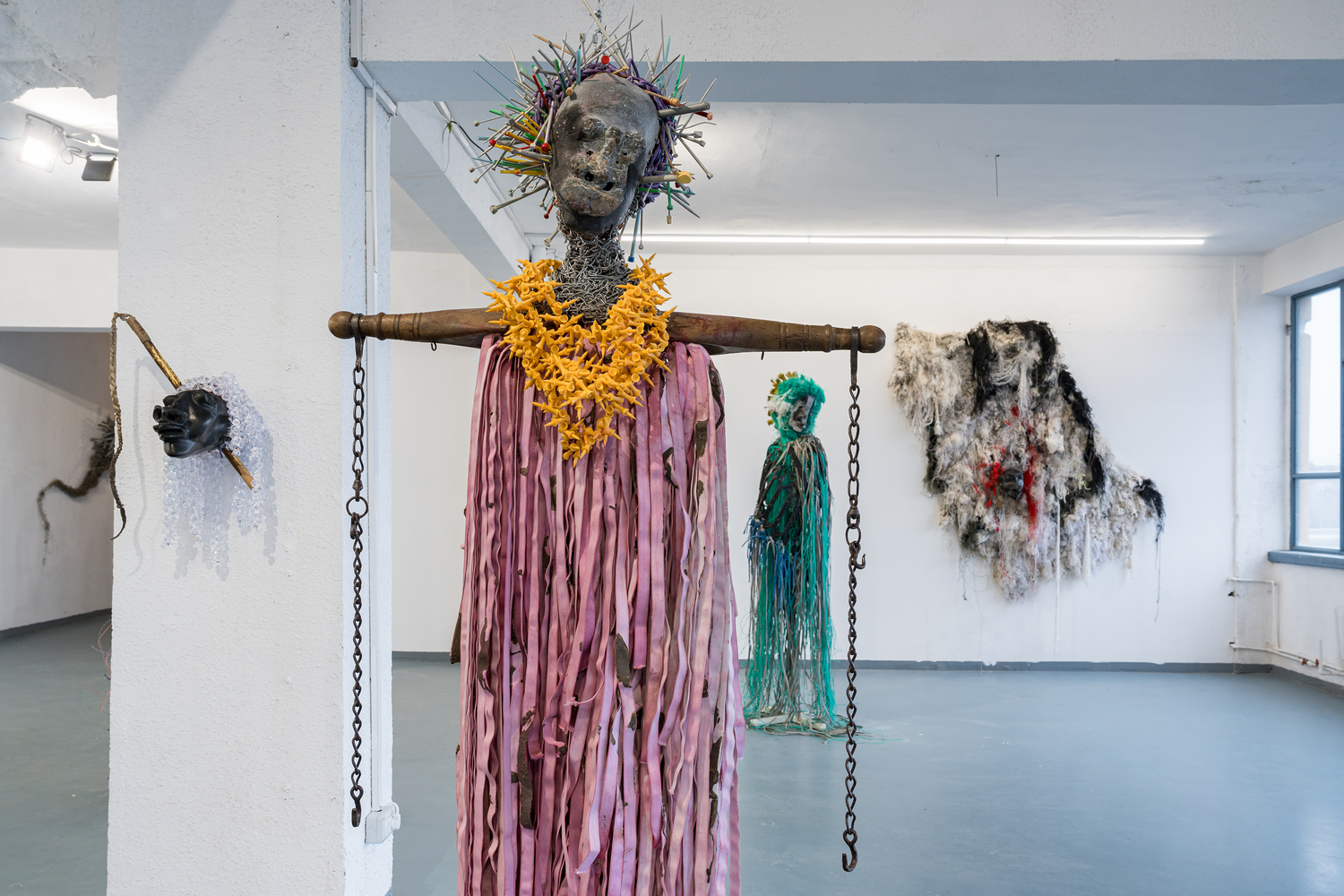
Terrence Musekiwa
Pesvedzero Isingazivikanwe / Influence of the Unknown, 2023
Install View
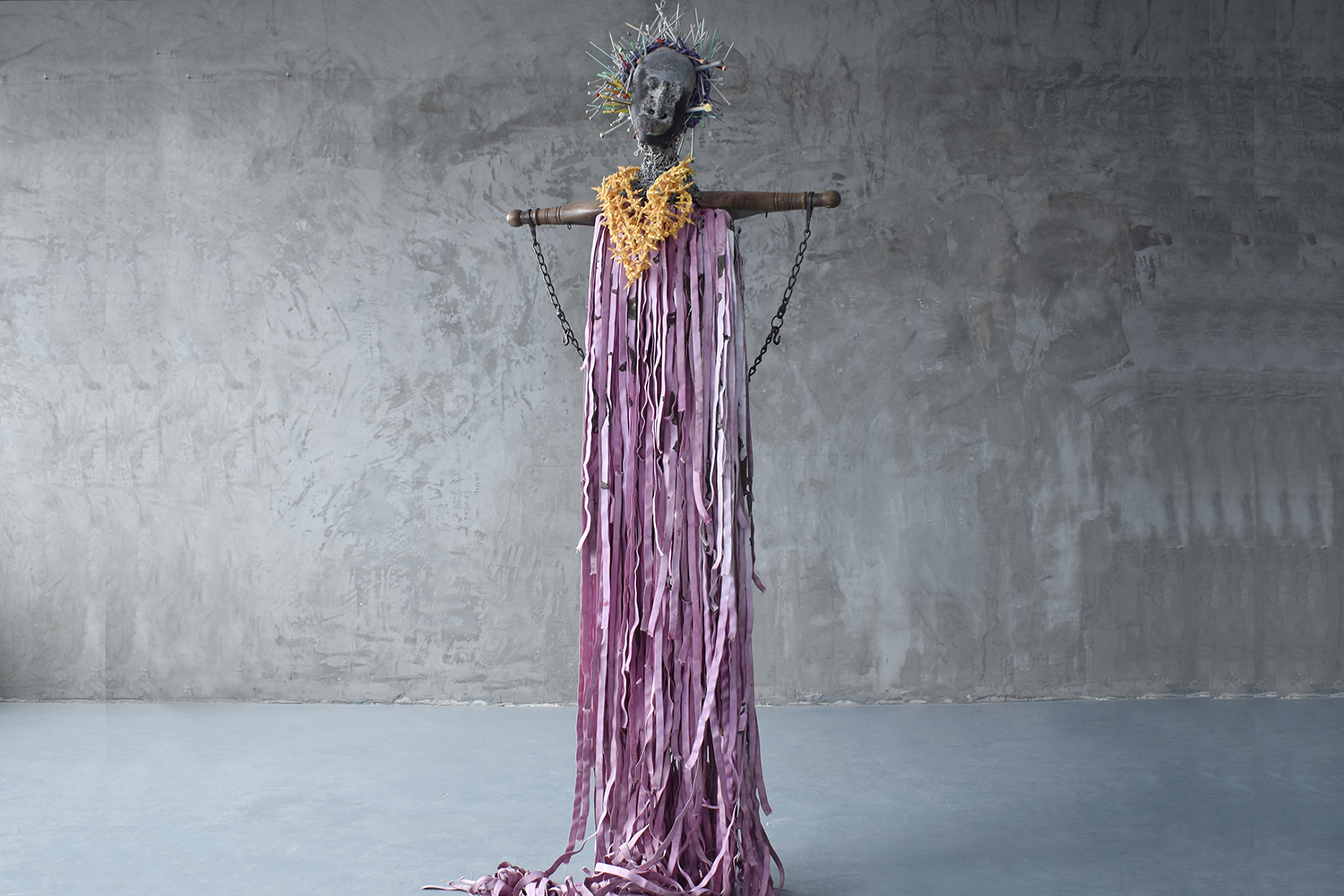
Terrence Musekiwa
Muranda Wepfungu Dzake (Prisoner of the mind), 2023
Springstone, wooden and iron yolk, dyed elastic cotton, plastic golf tees, knitting needles, and aluminum
220 × 90 × 35 cm
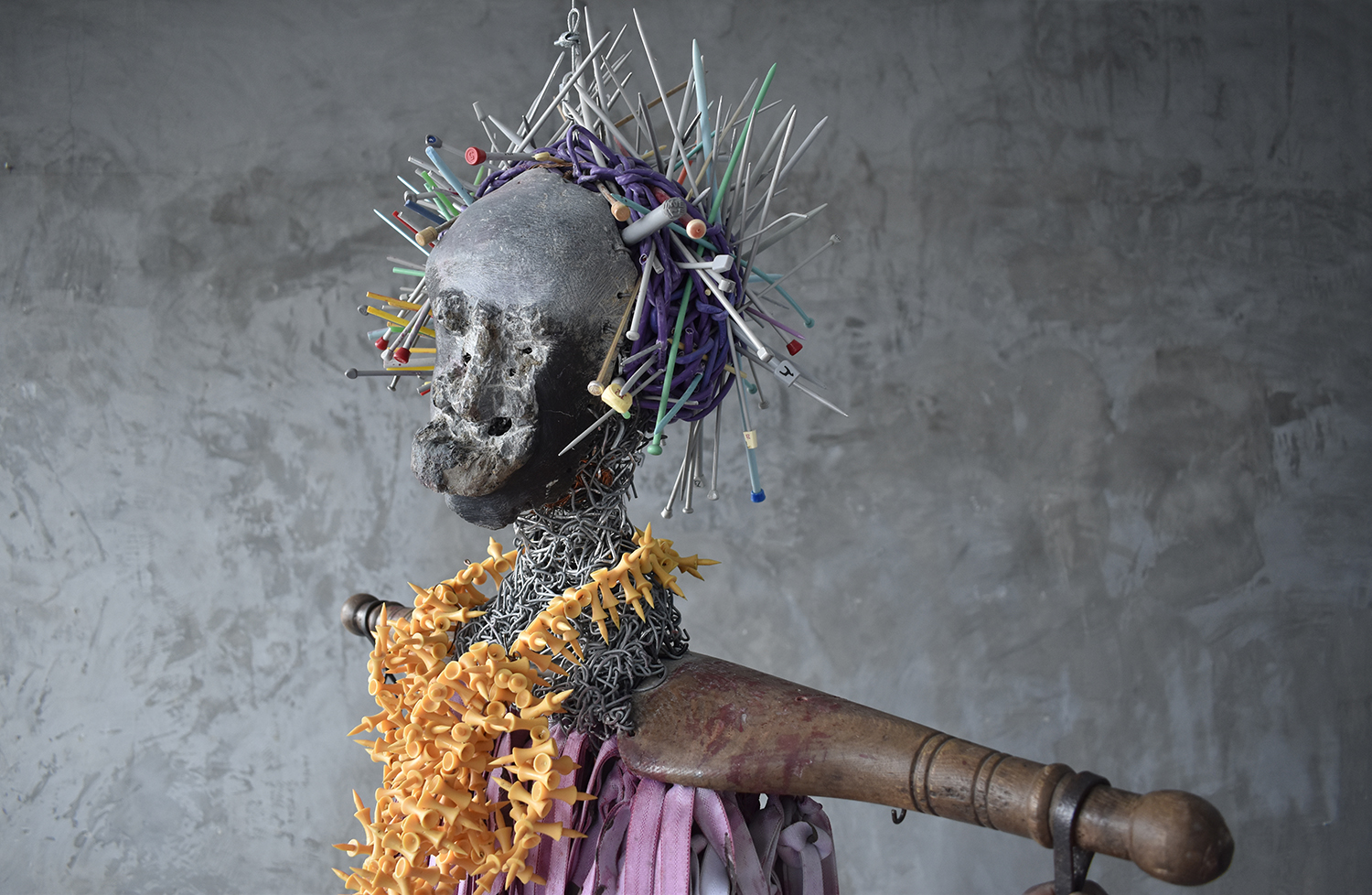
Terrence Musekiwa
Muranda Wepfungu Dzake (Prisoner of the mind), 2023
Detail
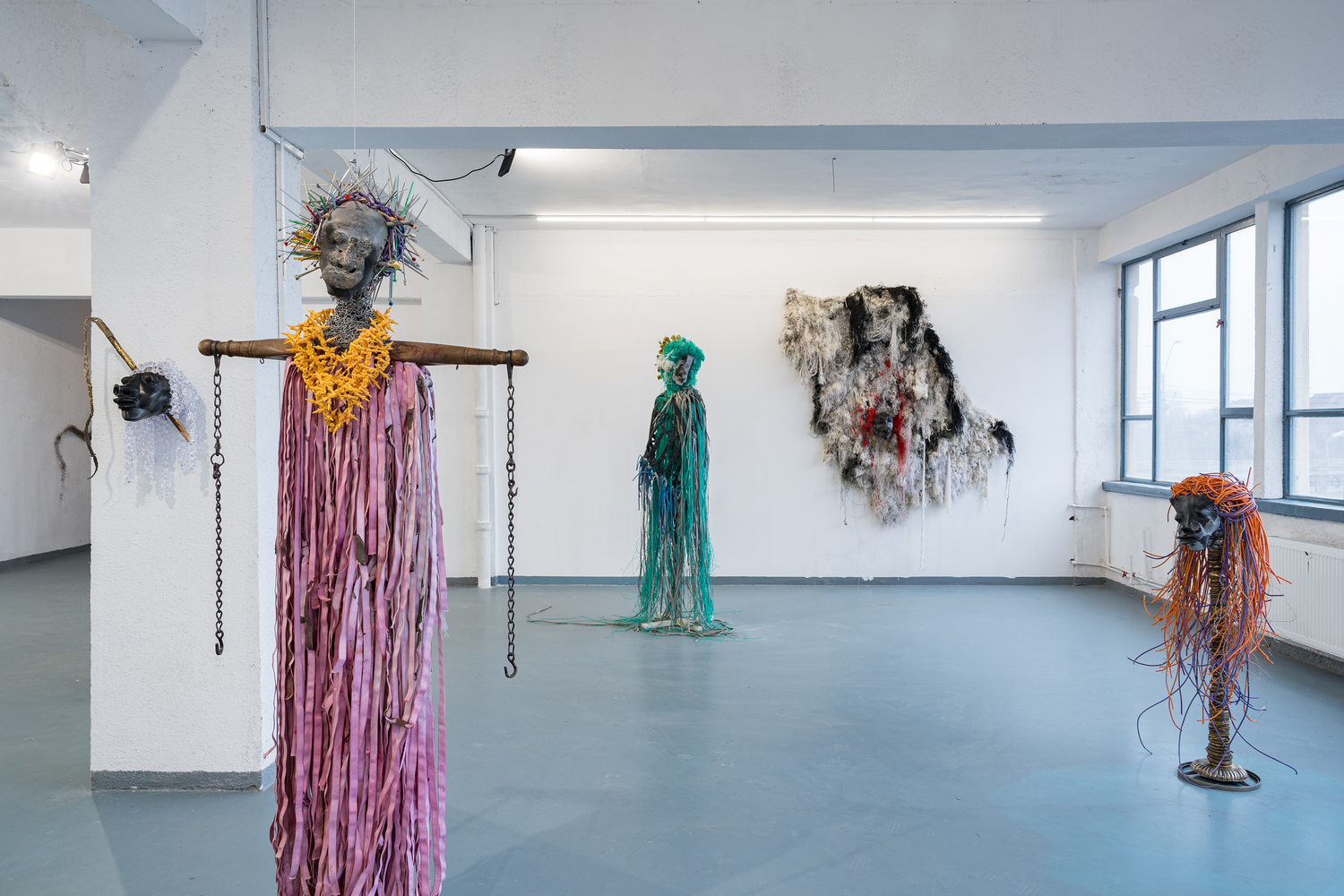
Terrence Musekiwa
Pesvedzero Isingazivikanwe / Influence of the Unknown, 2023
Install View
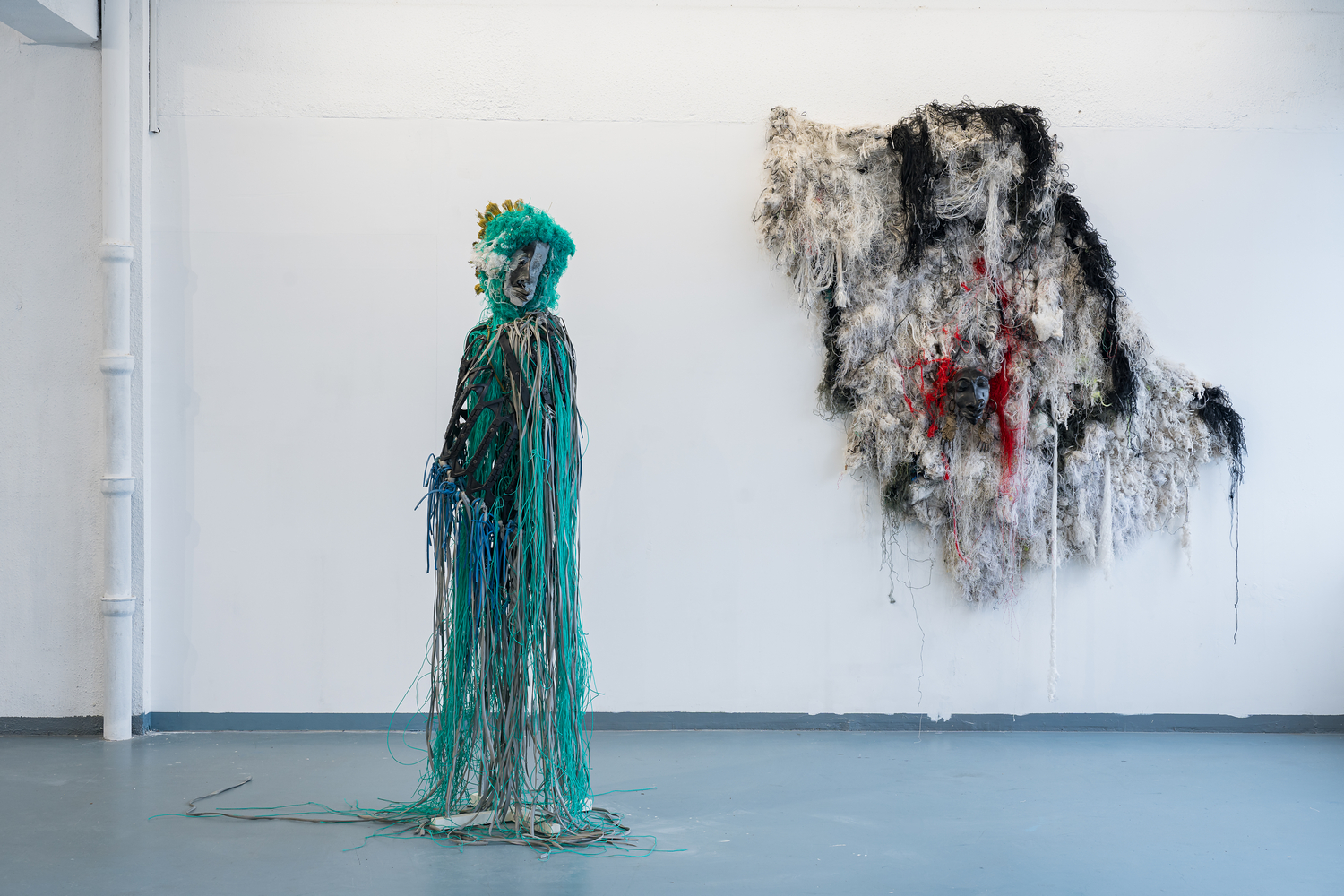
Terrence Musekiwa
Pesvedzero Isingazivikanwe / Influence of the Unknown, 2023
Install View
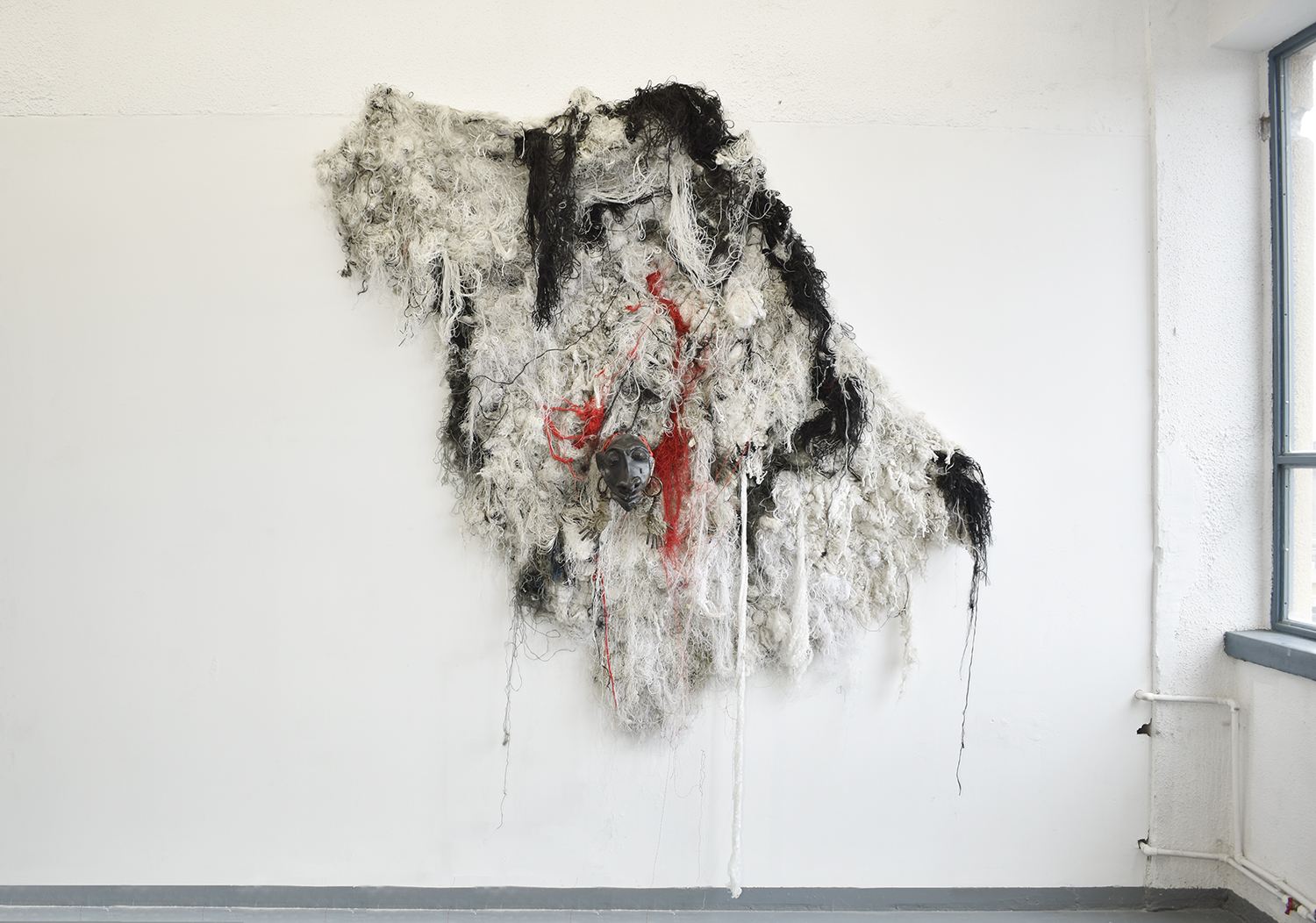
Terrence Musekiwa
What it become, 2023
Springstone, synthetic material, silk, wood, epoxy, earth, copper, plastic cables, and aluminium
215× 200 × 35 cm
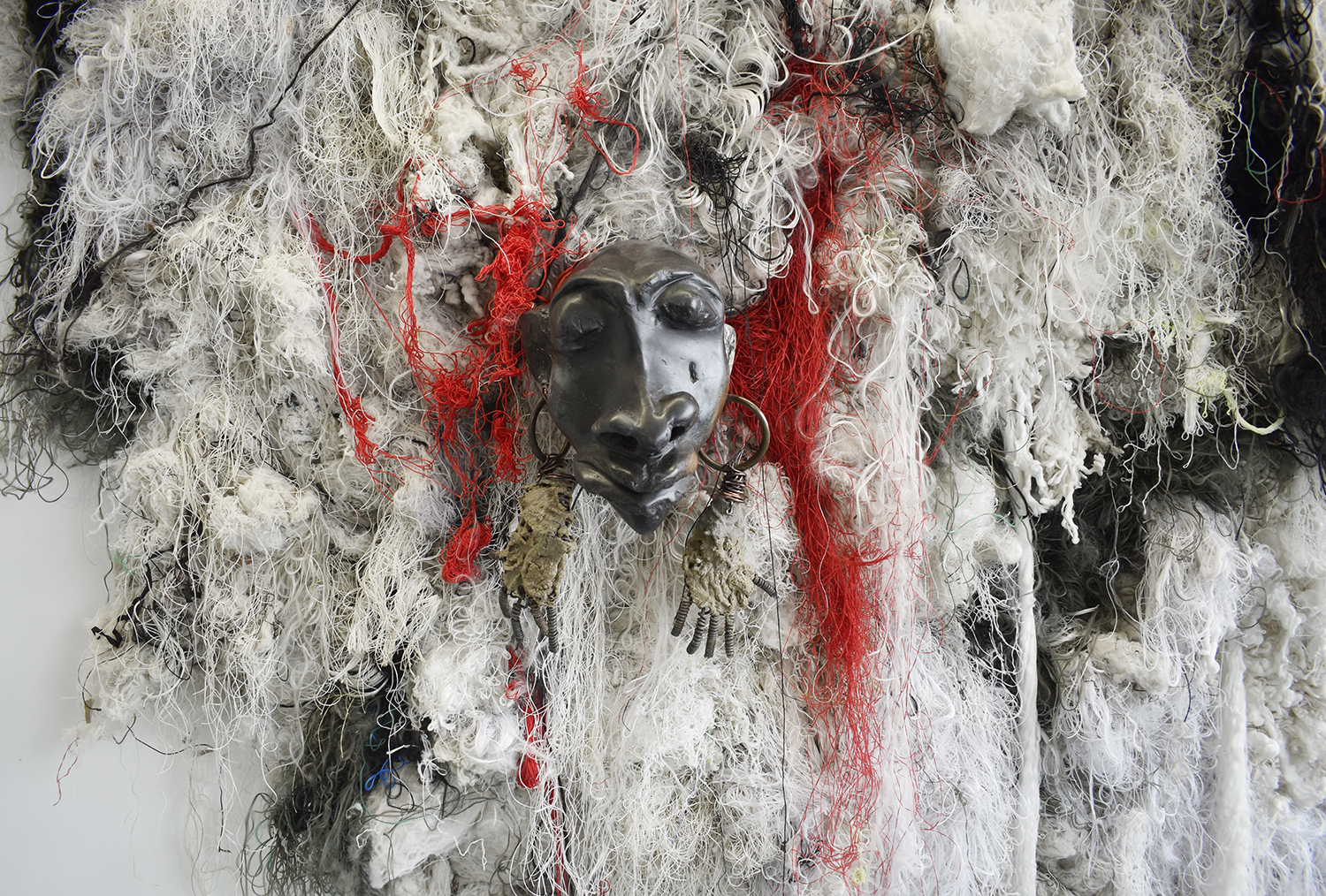
Terrence Musekiwa
What it become, 2023
Detail
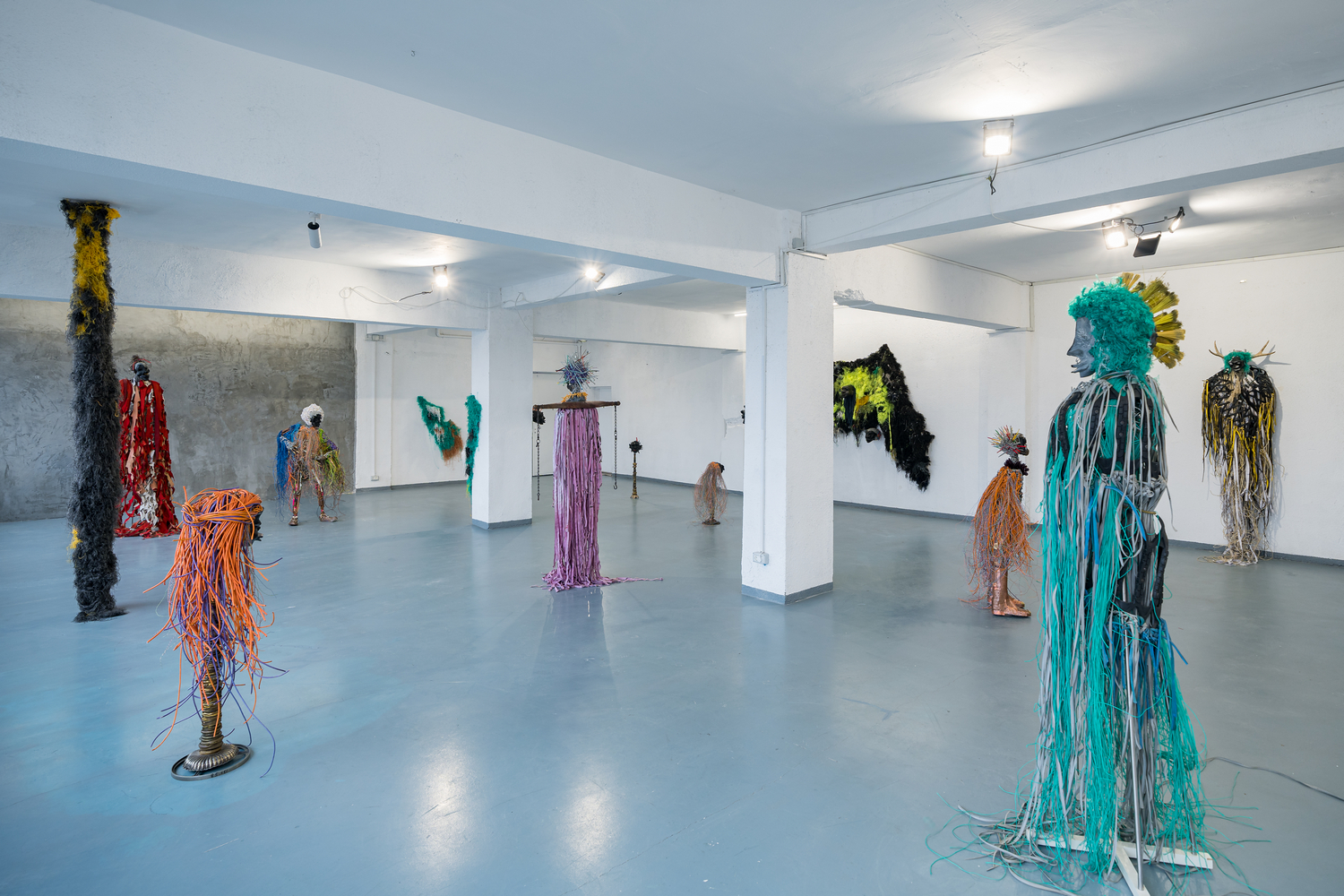
Terrence Musekiwa
Pesvedzero Isingazivikanwe / Influence of the Unknown, 2023
Install View
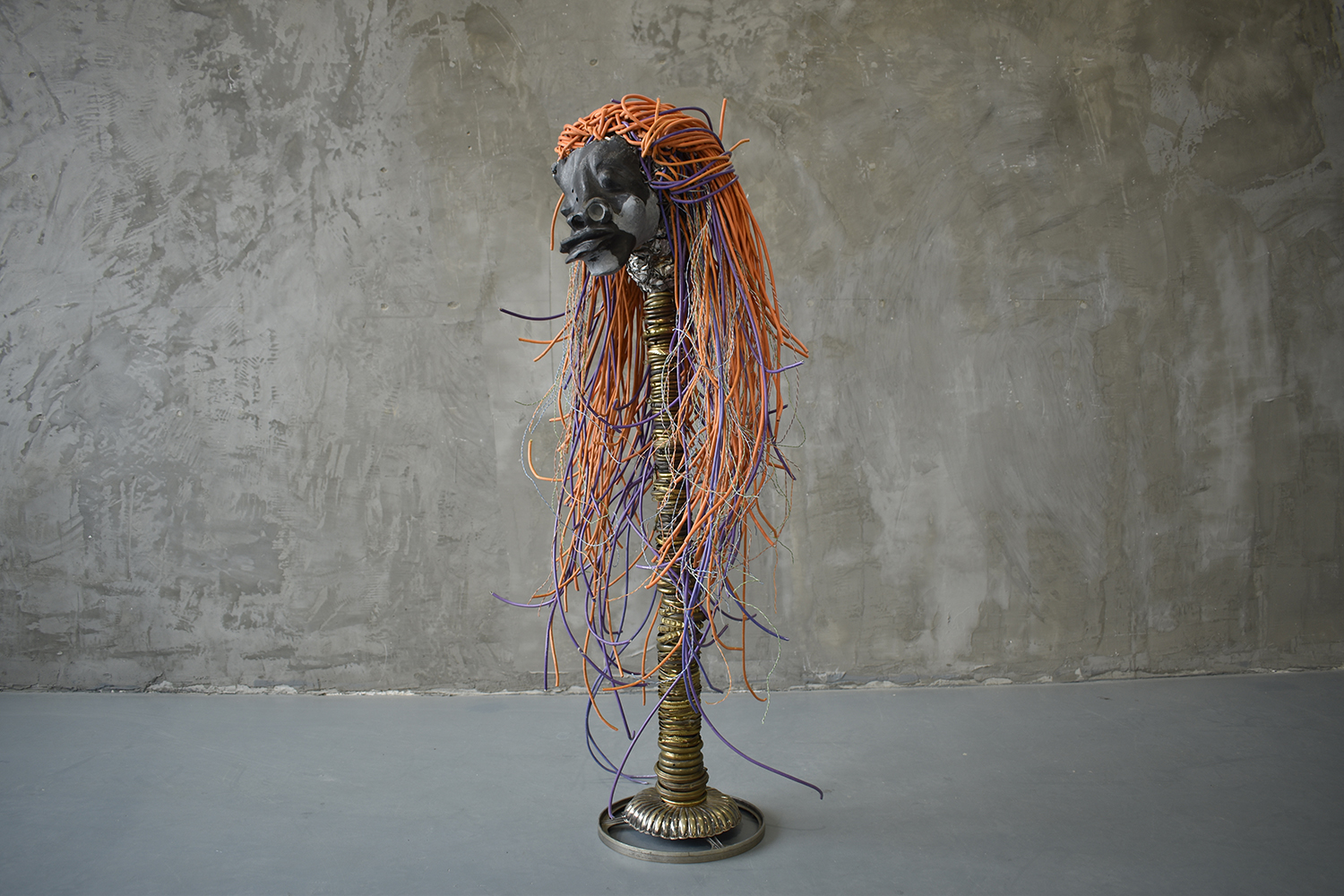
Terrence Musekiwa Kitapo, 2022
Springstone, internet cables, aluminium
steal, copper, brass, and silver
122 × 61 × 46 cm
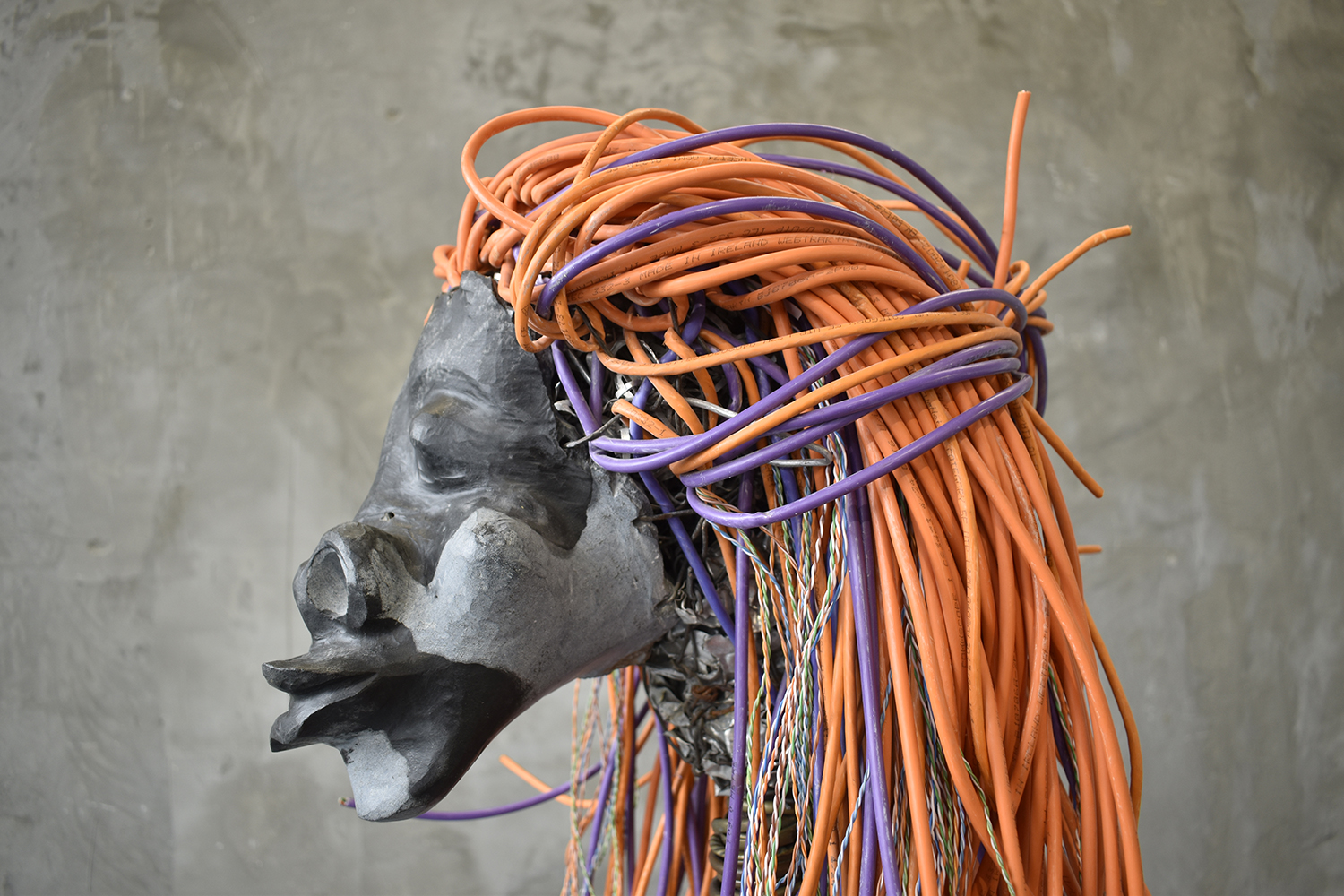
Terrence Musekiwa Kitapo, 2022
Detail
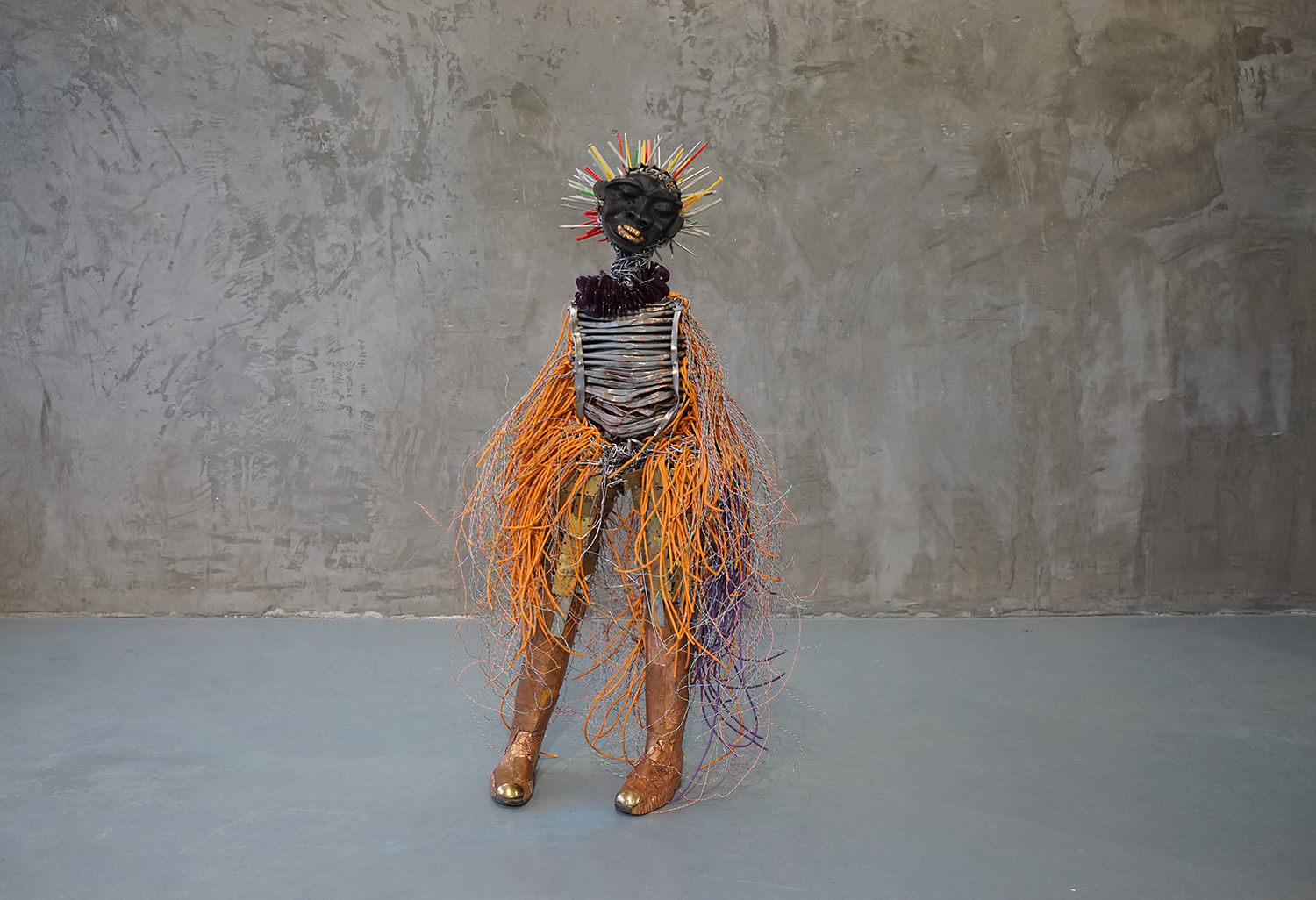
Terrence Musekiwa
Mutumburi Wemunzwa (Thorn Remover), 2023
Springstone, ceramic dentures, gold leaf, radiator, crystal hard plastic, internet cables, brass numbered plates, 1900’s riding boots, copper, knitting needles, and aluminum
148 × 62 × 65 cm
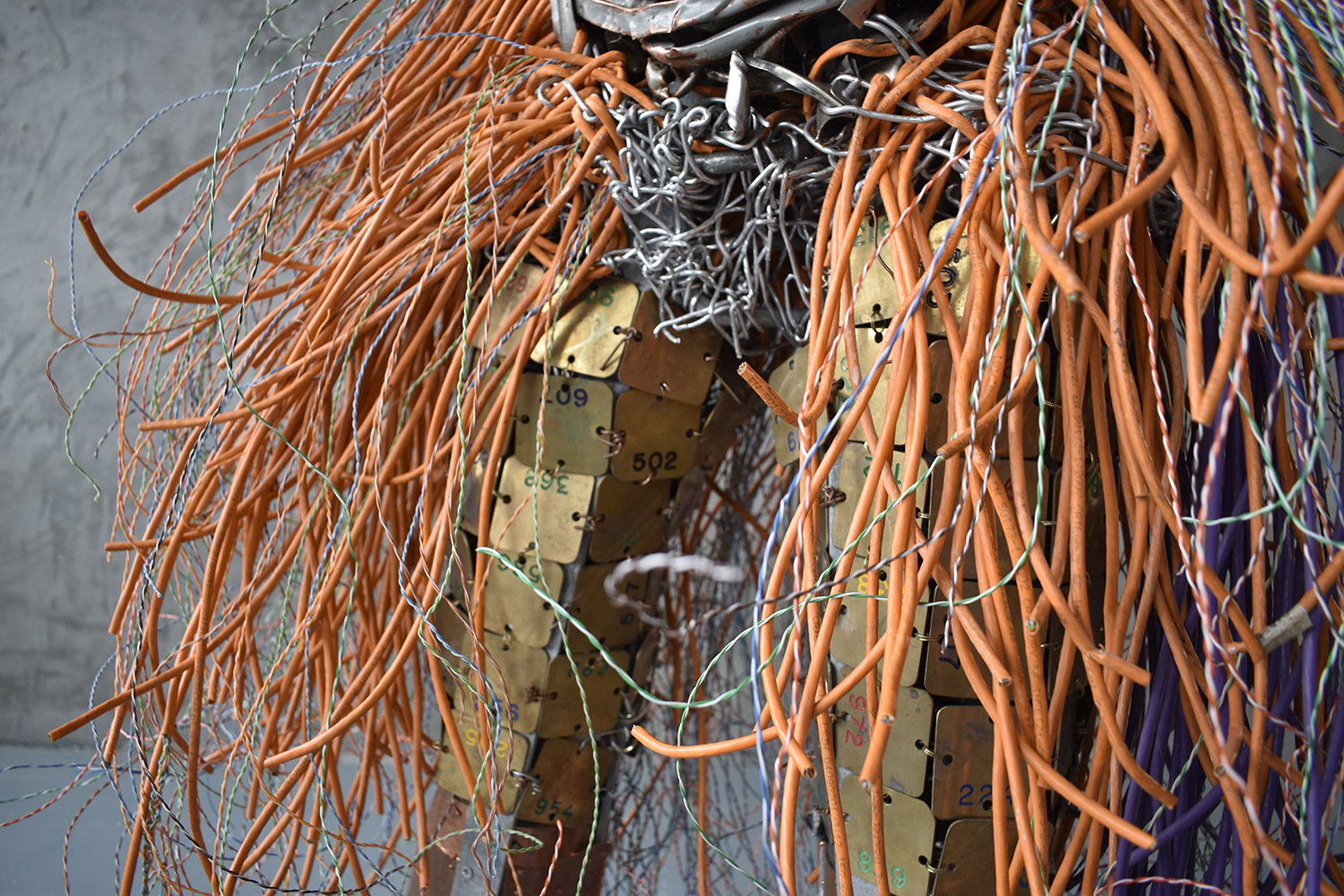
Terrence Musekiwa
Mutumburi Wemunzwa (Thorn Remover), 2023
Detail
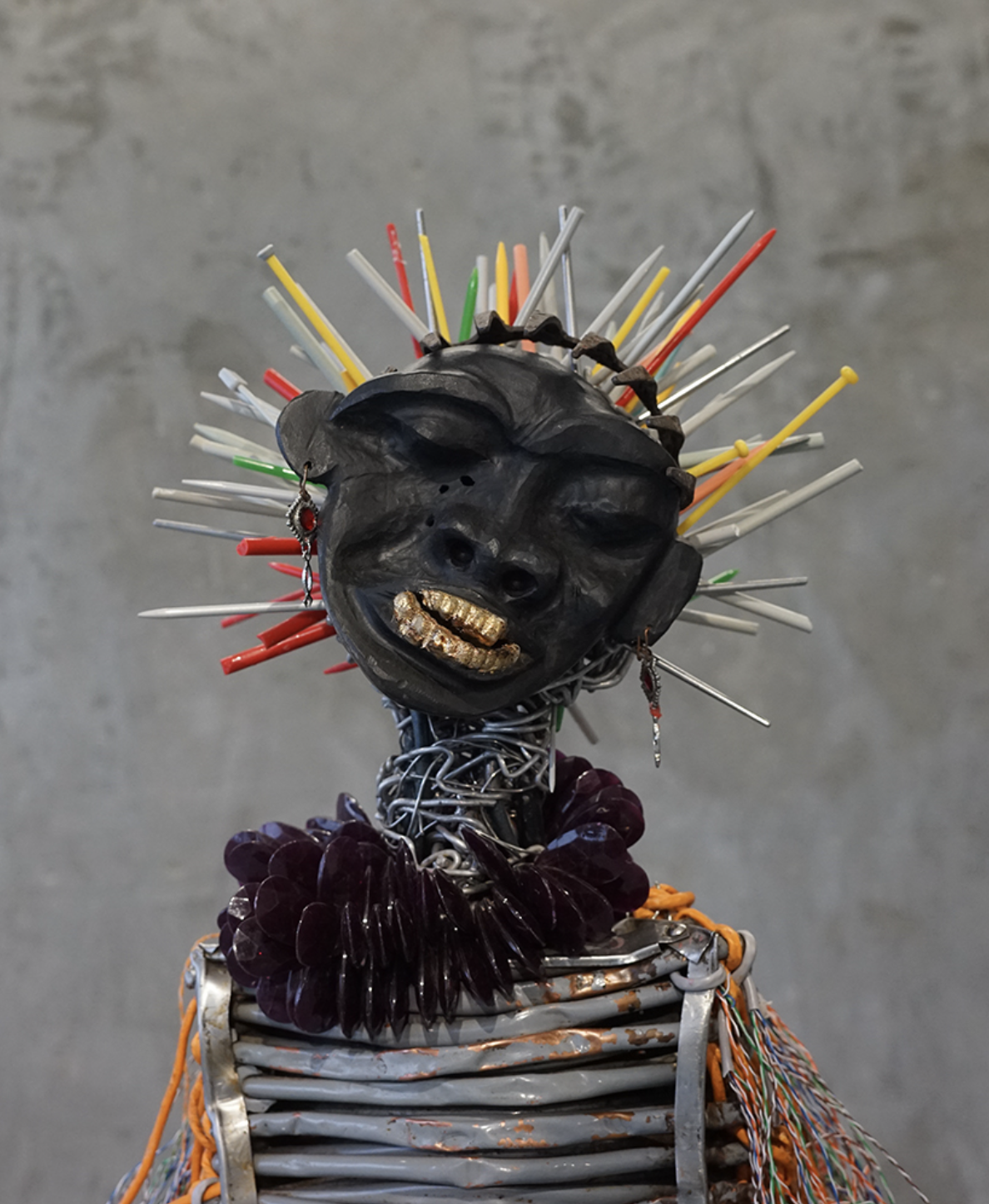
Terrence Musekiwa
Mutumburi Wemunzwa (Thorn Remover), 2023
Detail
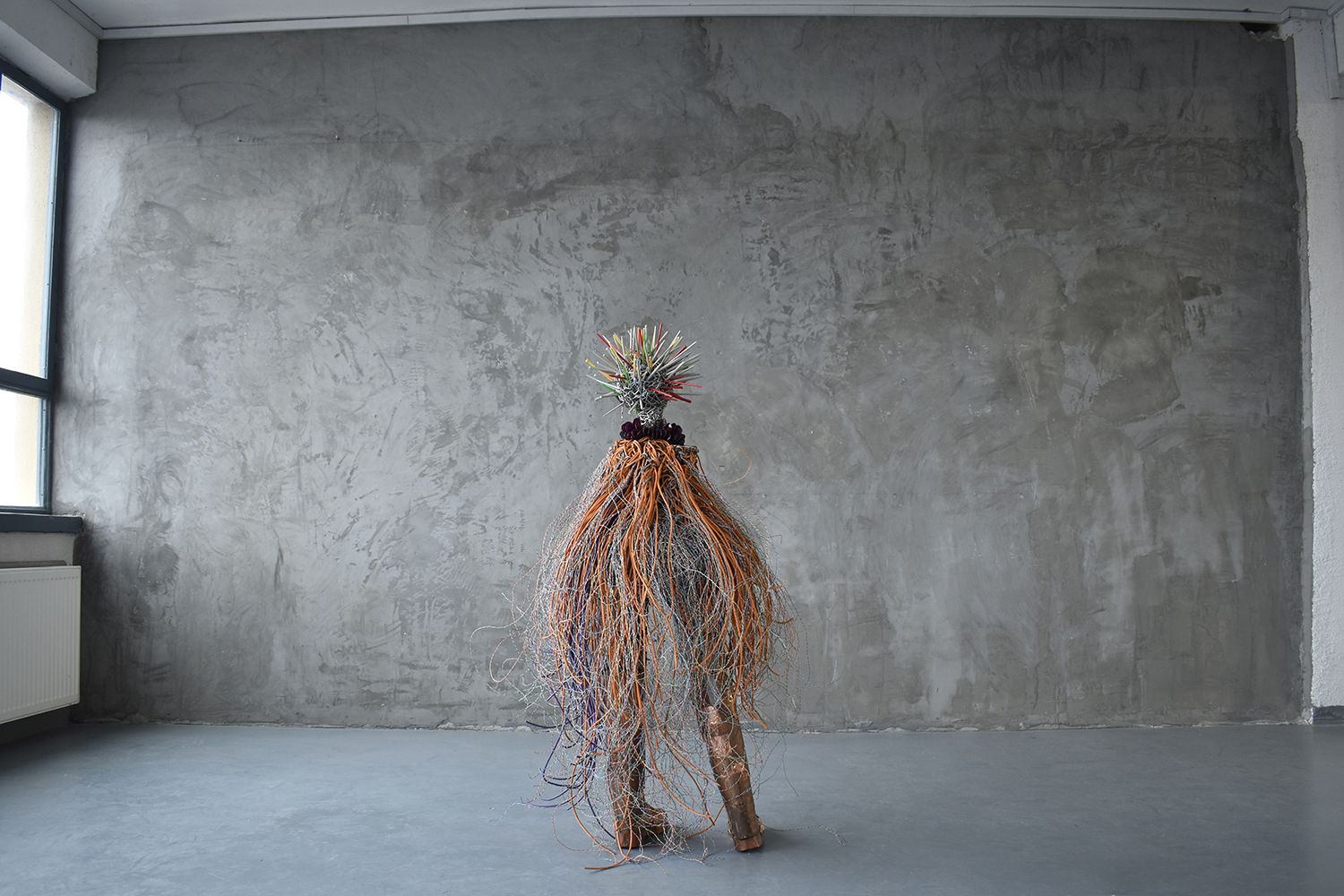
Terrence Musekiwa
Mutumburi Wemunzwa (Thorn Remover), 2023
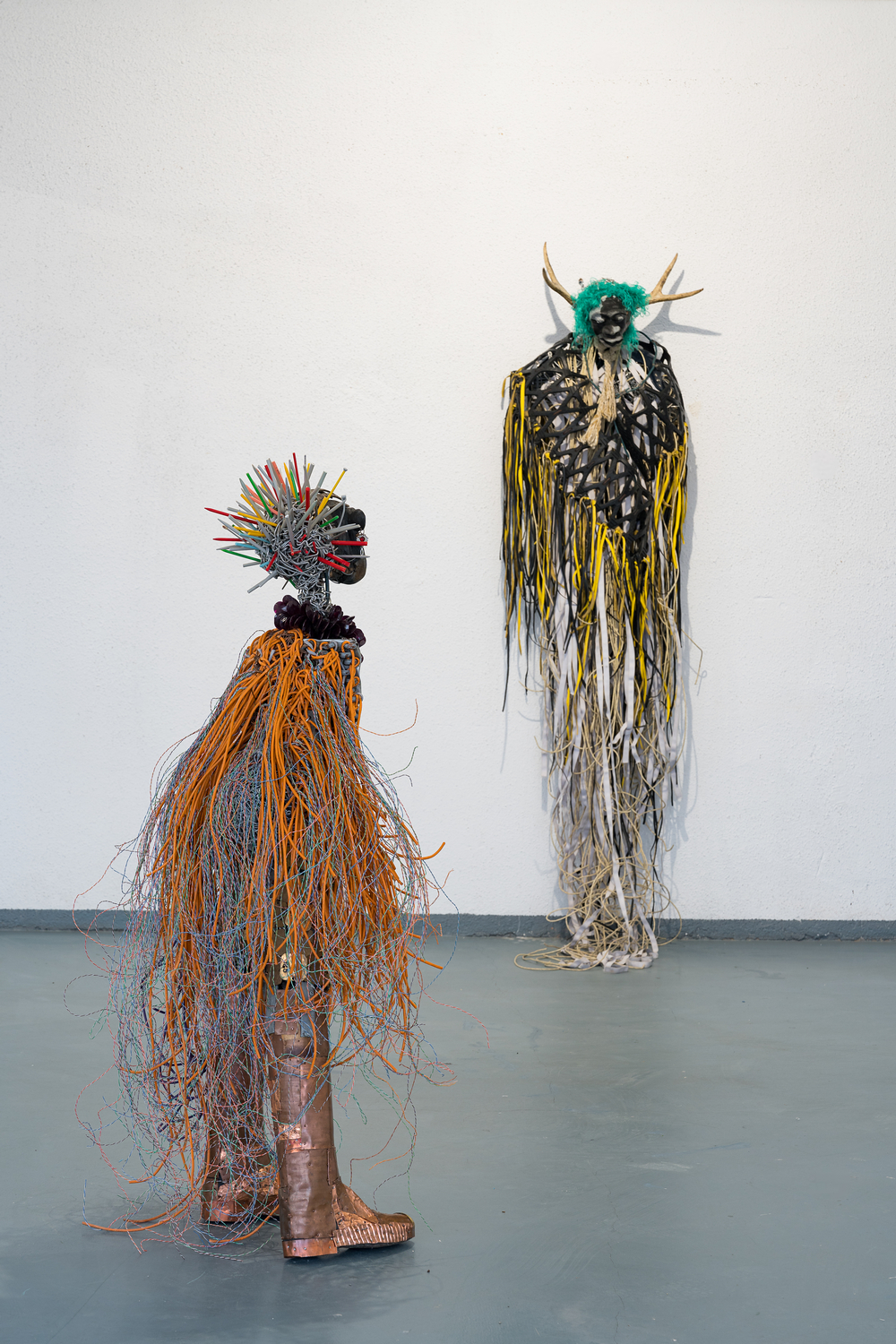
Terrence Musekiwa
Pesvedzero Isingazivikanwe / Influence of the Unknown, 2023
Install View
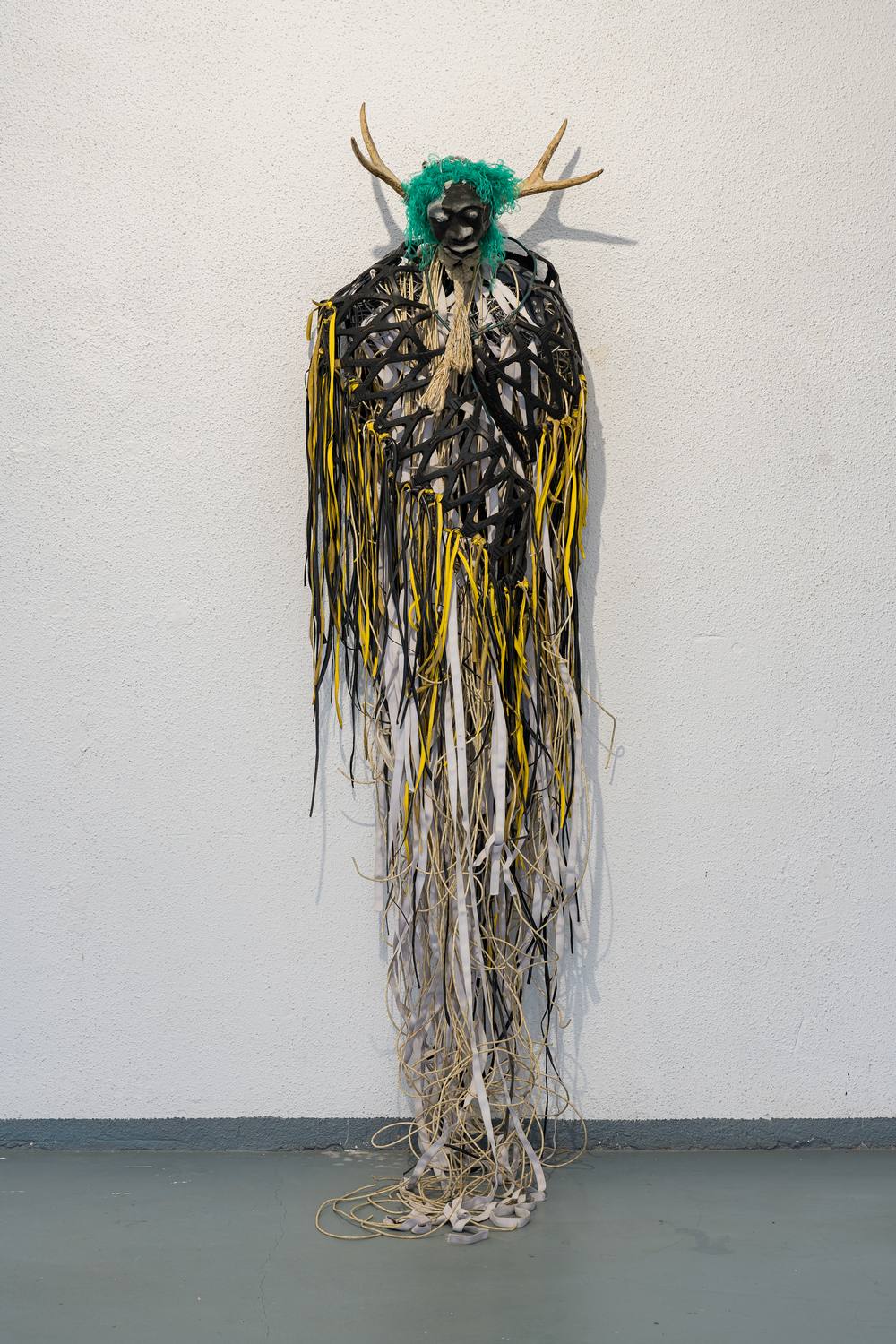
Terrence Musekiwa Varatidzi Vezvakavandika 2 (Mystical Revealers), 2021
Springstone, tire rubber, silk, felt, synthetic bristles, cotton and copper rope
Approx.: 230 × 60 × 30 cm
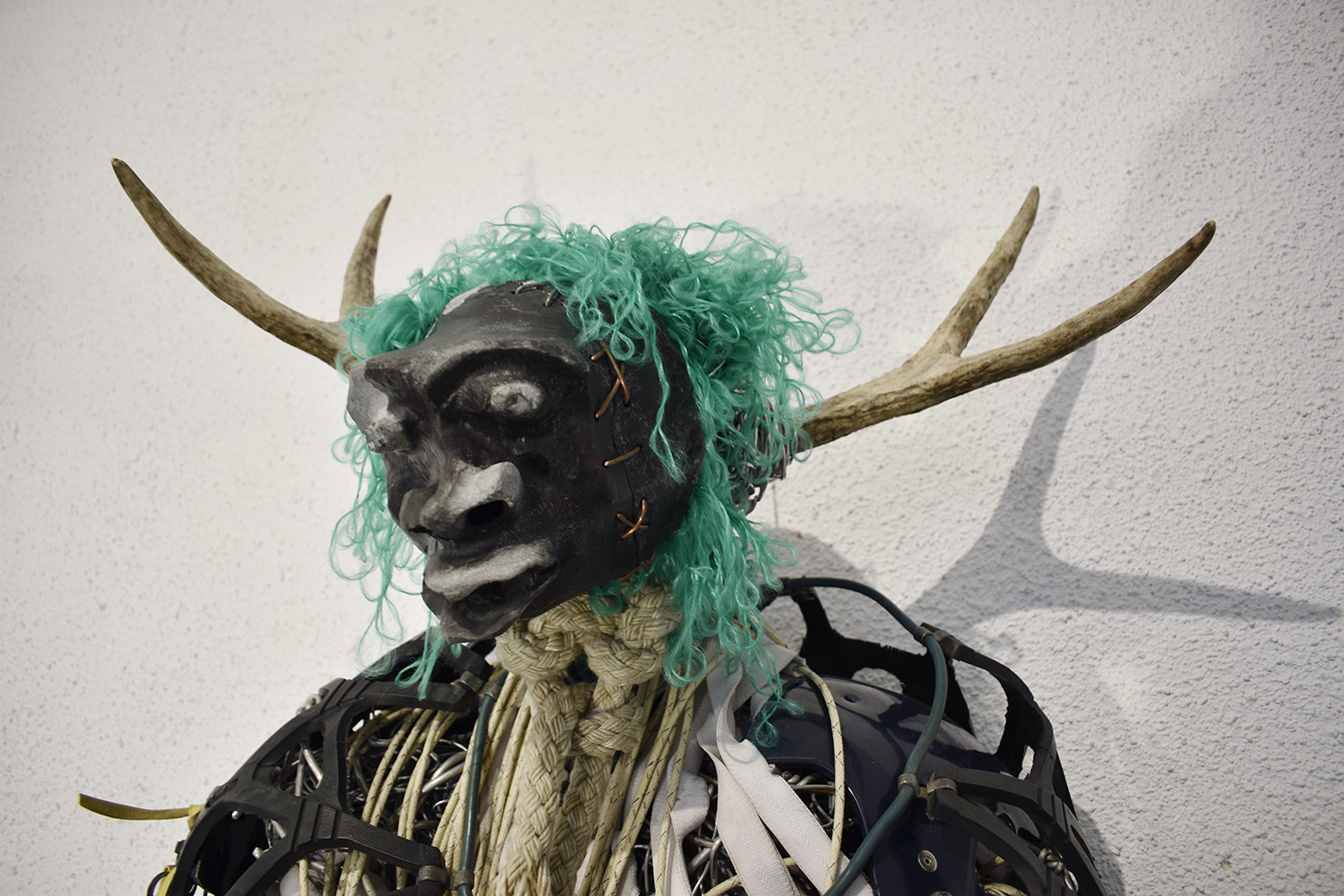
Terrence Musekiwa Varatidzi Vezvakavandika 2 (Mystical Revealers), 2021
Detail
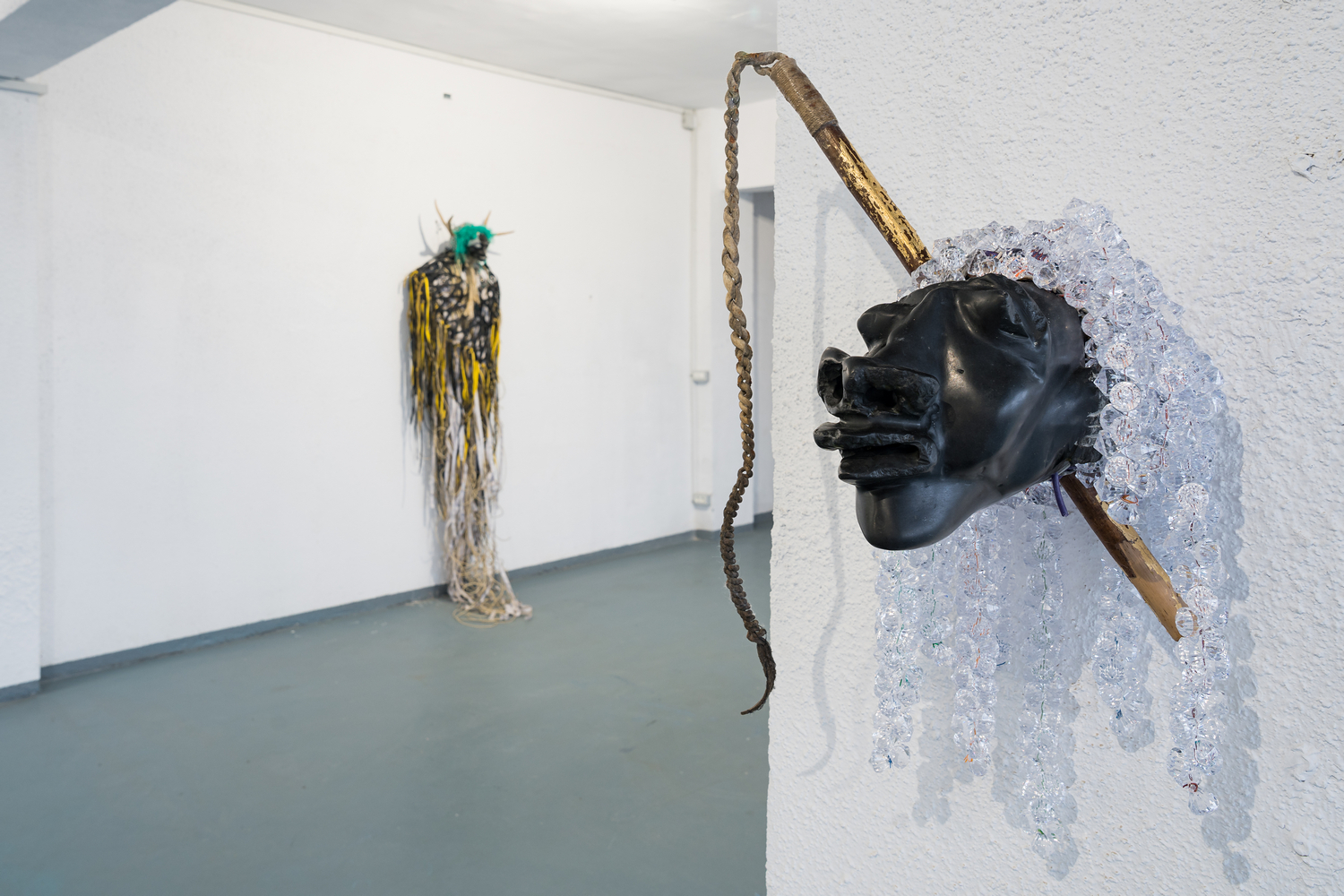
Terrence Musekiwa
Pesvedzero Isingazivikanwe / Influence of the Unknown, 2023
Install View
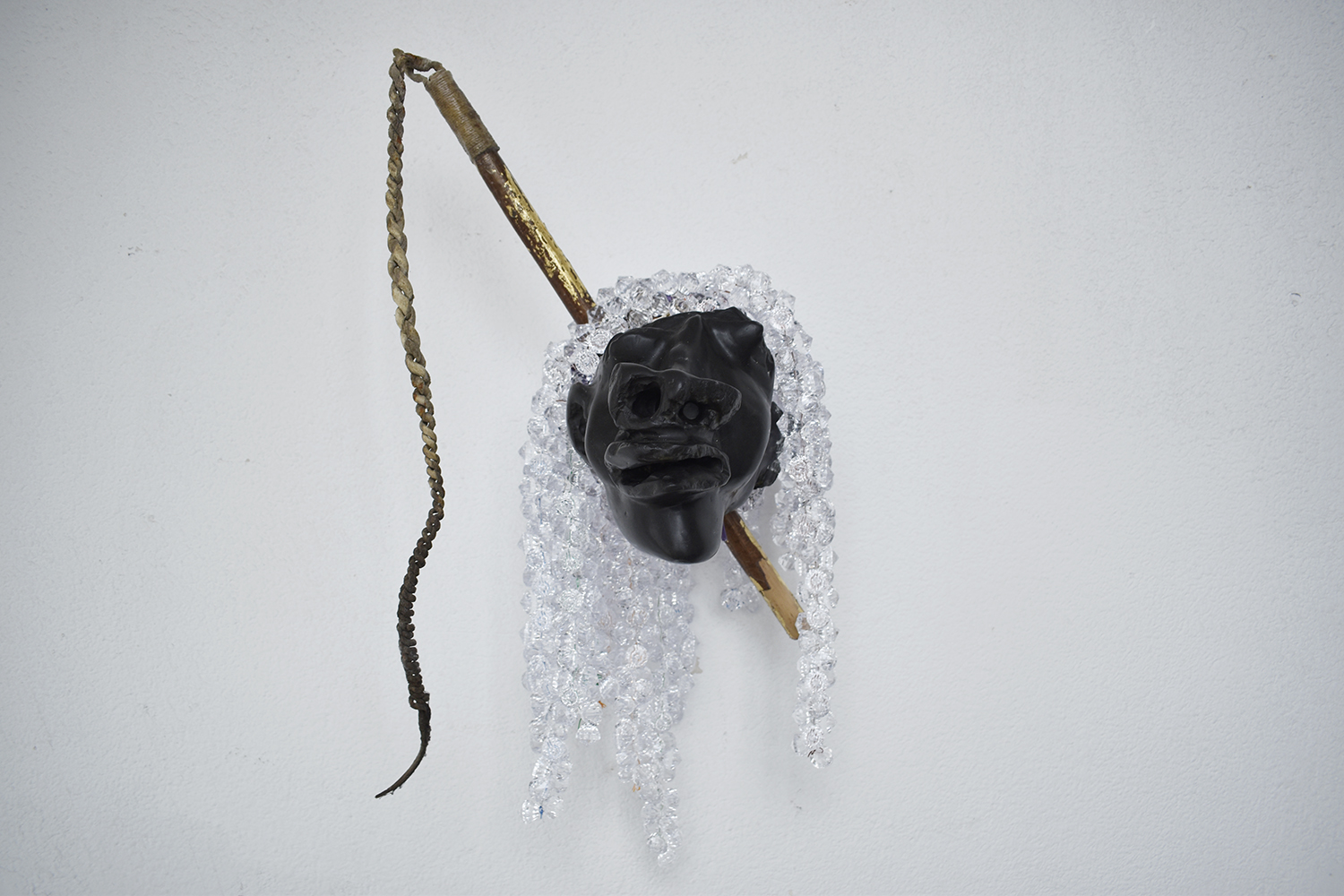
Terrence Musekiwa
Mbavha yesirivhera nendarama, 2023
Springstone, wooden and leather riding stick,
crystal plastic beads, and aluminum
70 × 40 × 35 cm
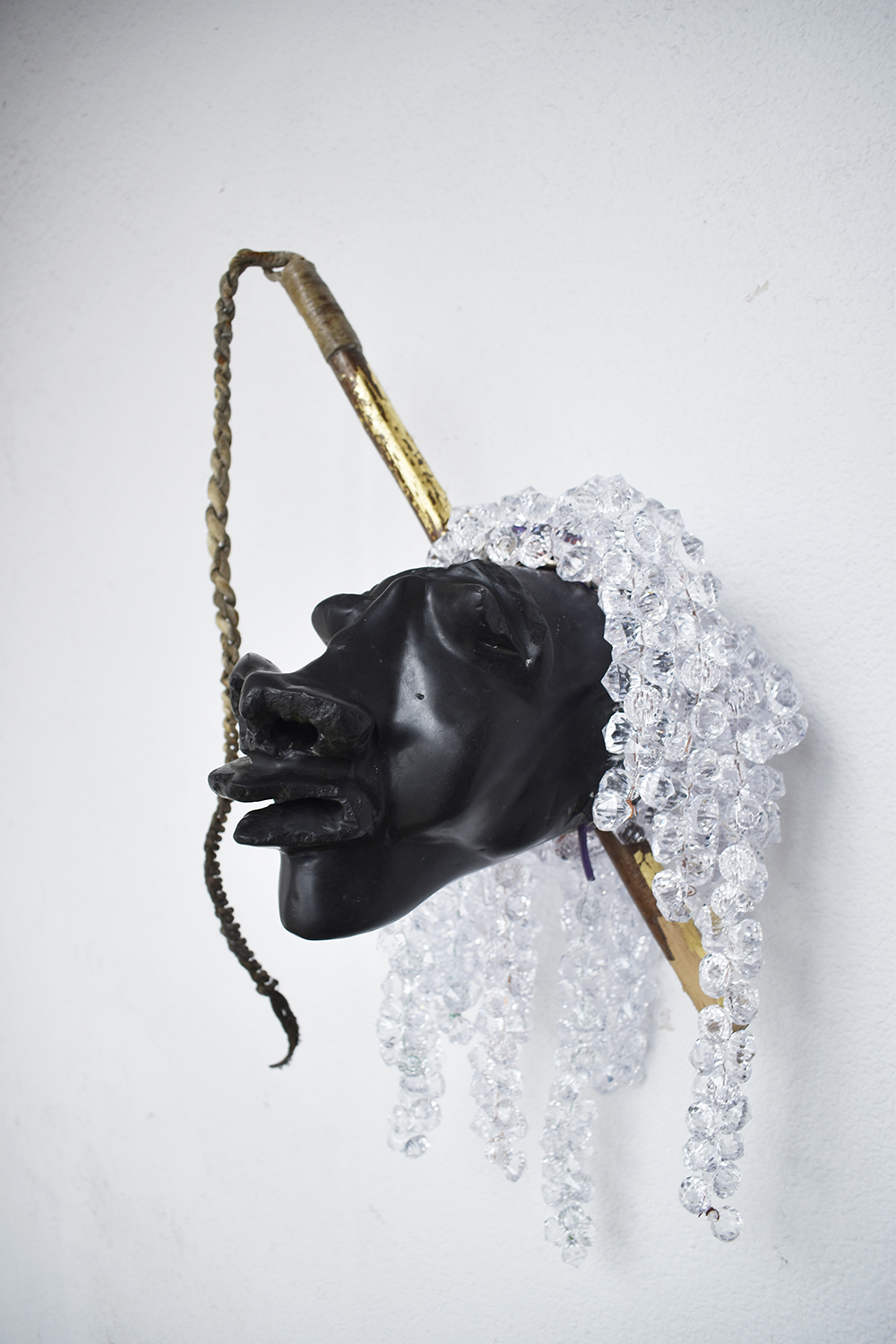
Terrence Musekiwa
Mbavha yesirivhera nendarama, 2023
Springstone, wooden and leather riding stick,
crystal plastic beads, and aluminum
70 × 40 × 35 cm
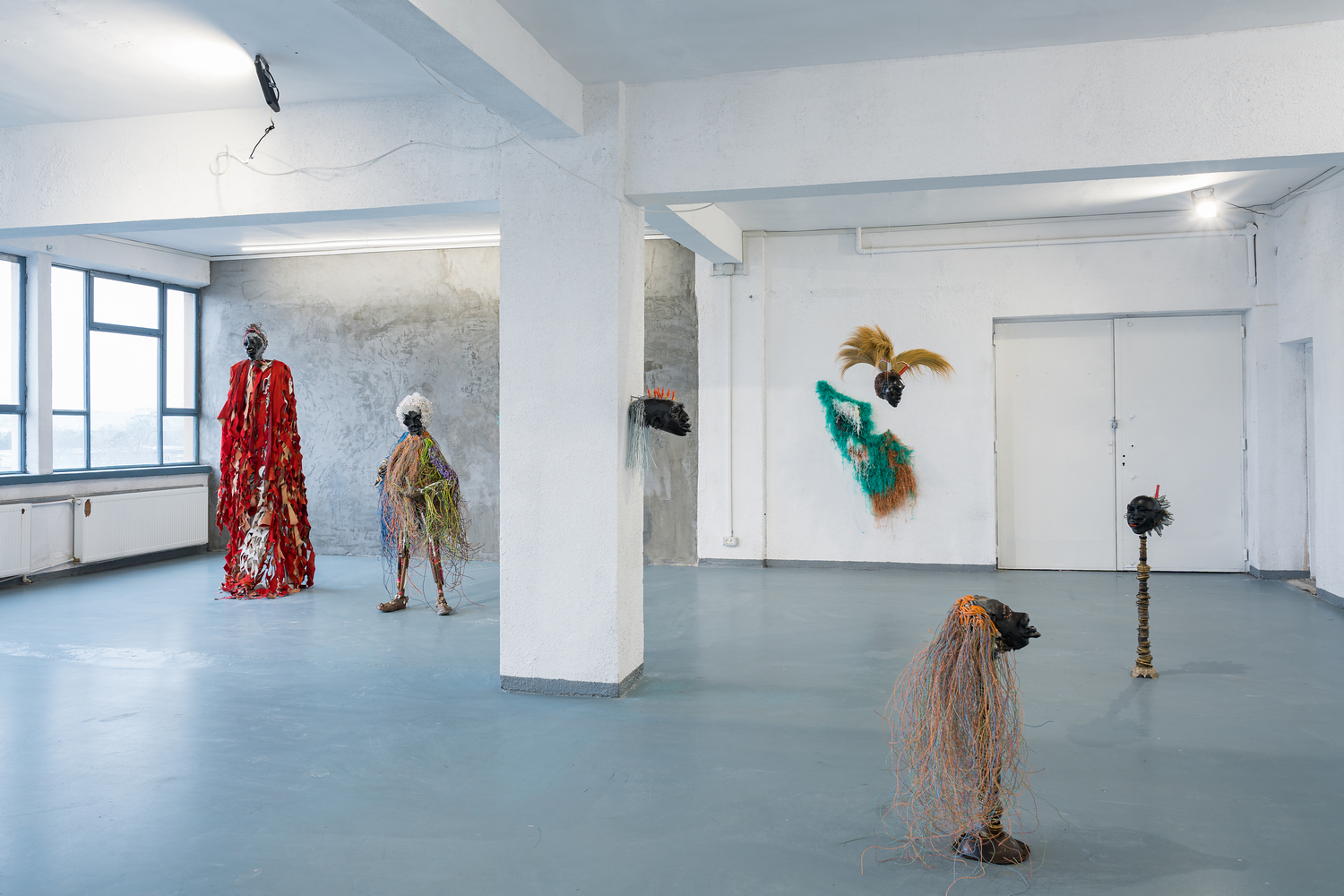
Terrence Musekiwa
Pesvedzero Isingazivikanwe / Influence of the Unknown, 2023
Install View
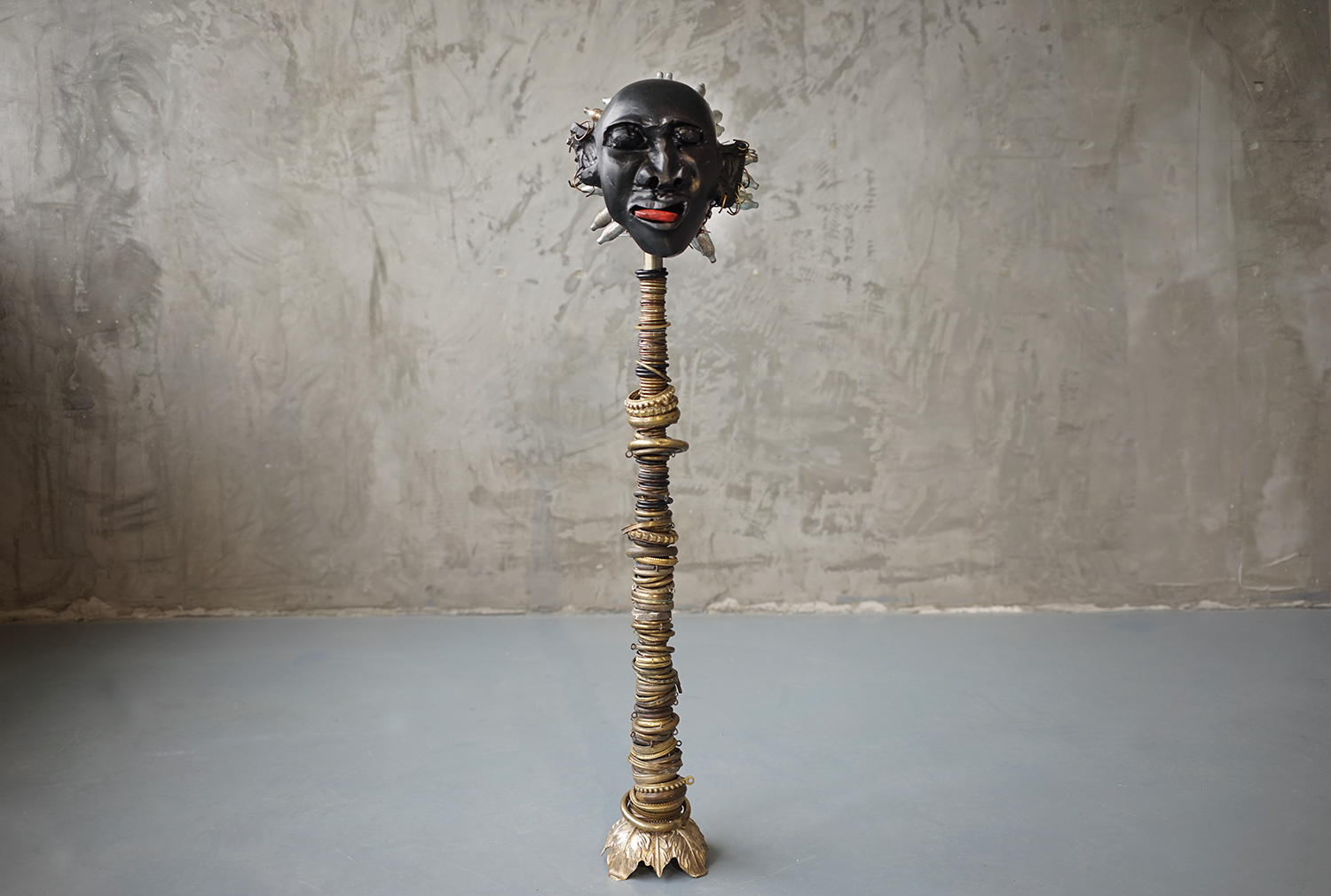
Terrence Musekiwa
rurimi moto (the tongue is fire), 2023
Detail
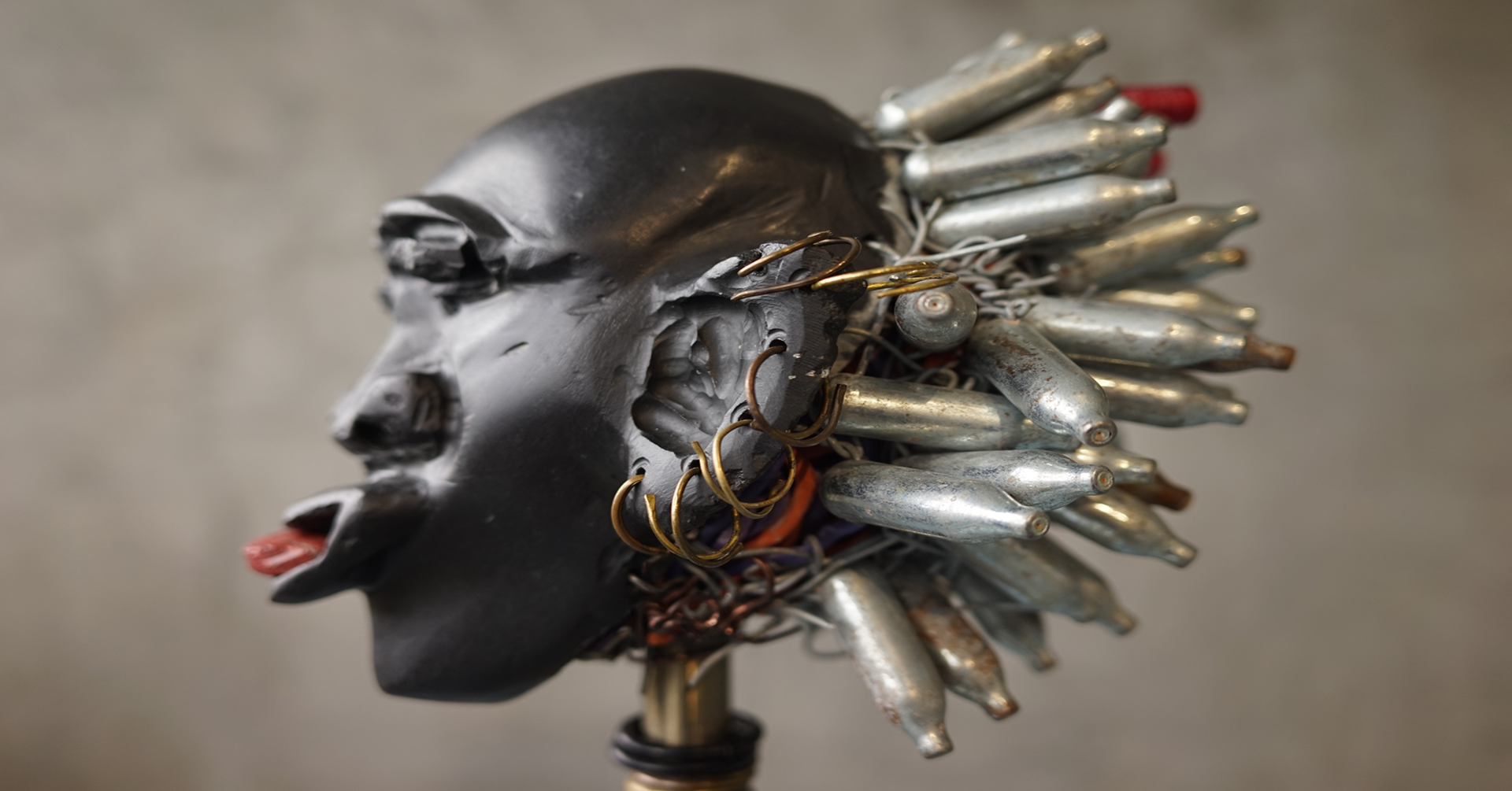
Terrence Musekiwa
rurimi moto (the tongue is fire), 2023
Detail
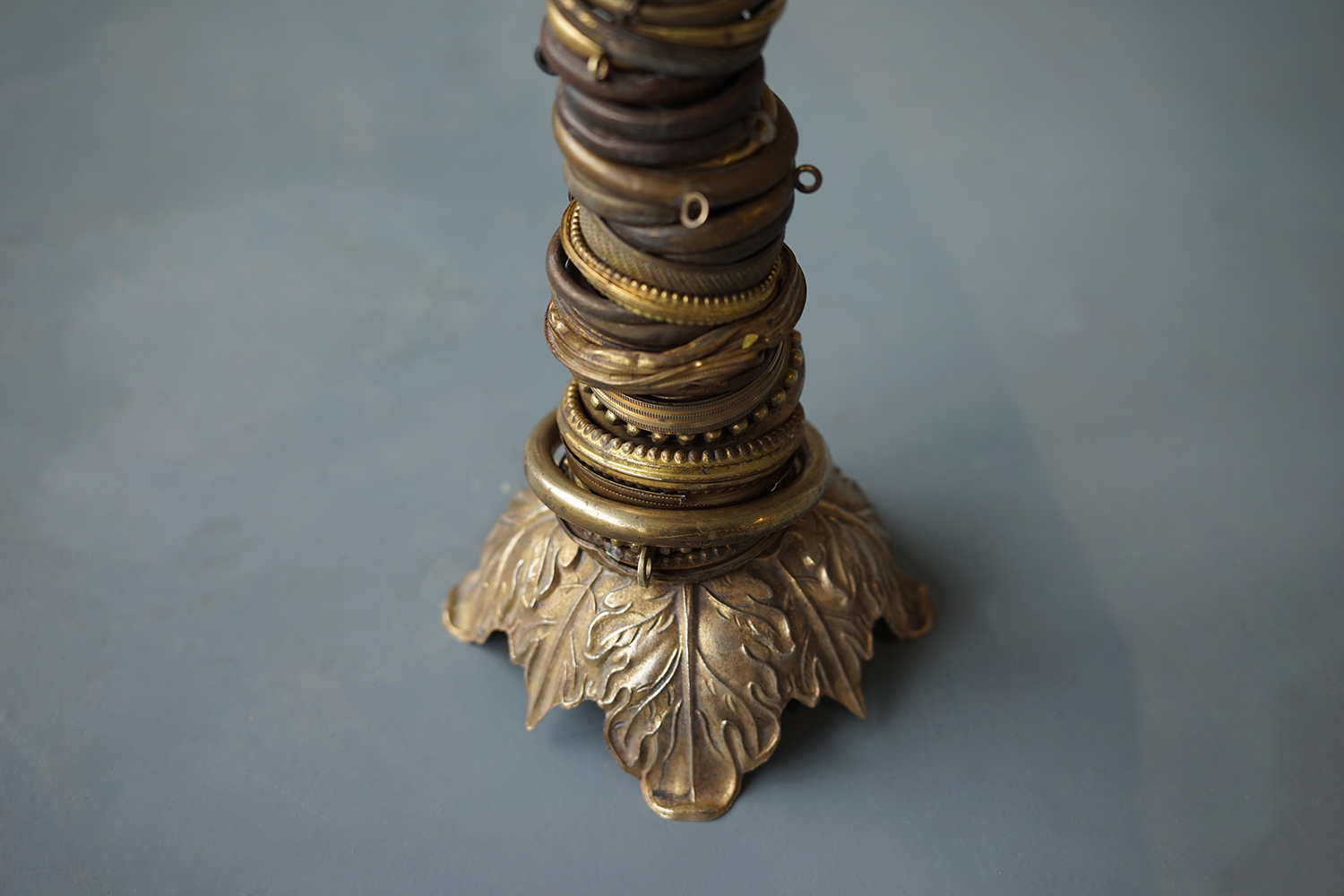
Terrence Musekiwa
rurimi moto (the tongue is fire), 2023
Springstone, Red Jasper, nitrous oxide canisters,
brass rings, brass, aluminum, and teak
103 × 29 × 38 cm
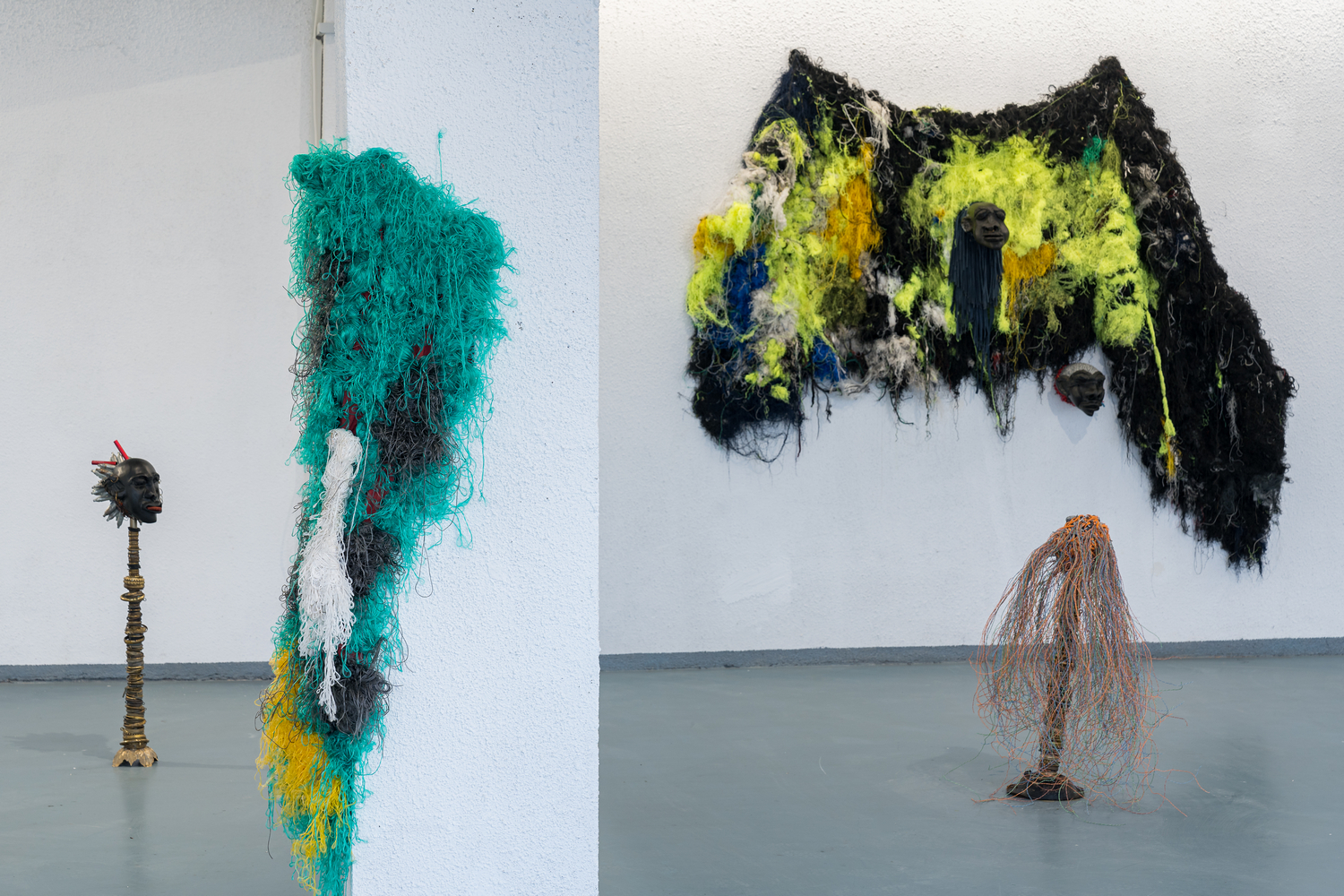
Terrence Musekiwa
Pesvedzero Isingazivikanwe / Influence of the Unknown, 2023
Install View
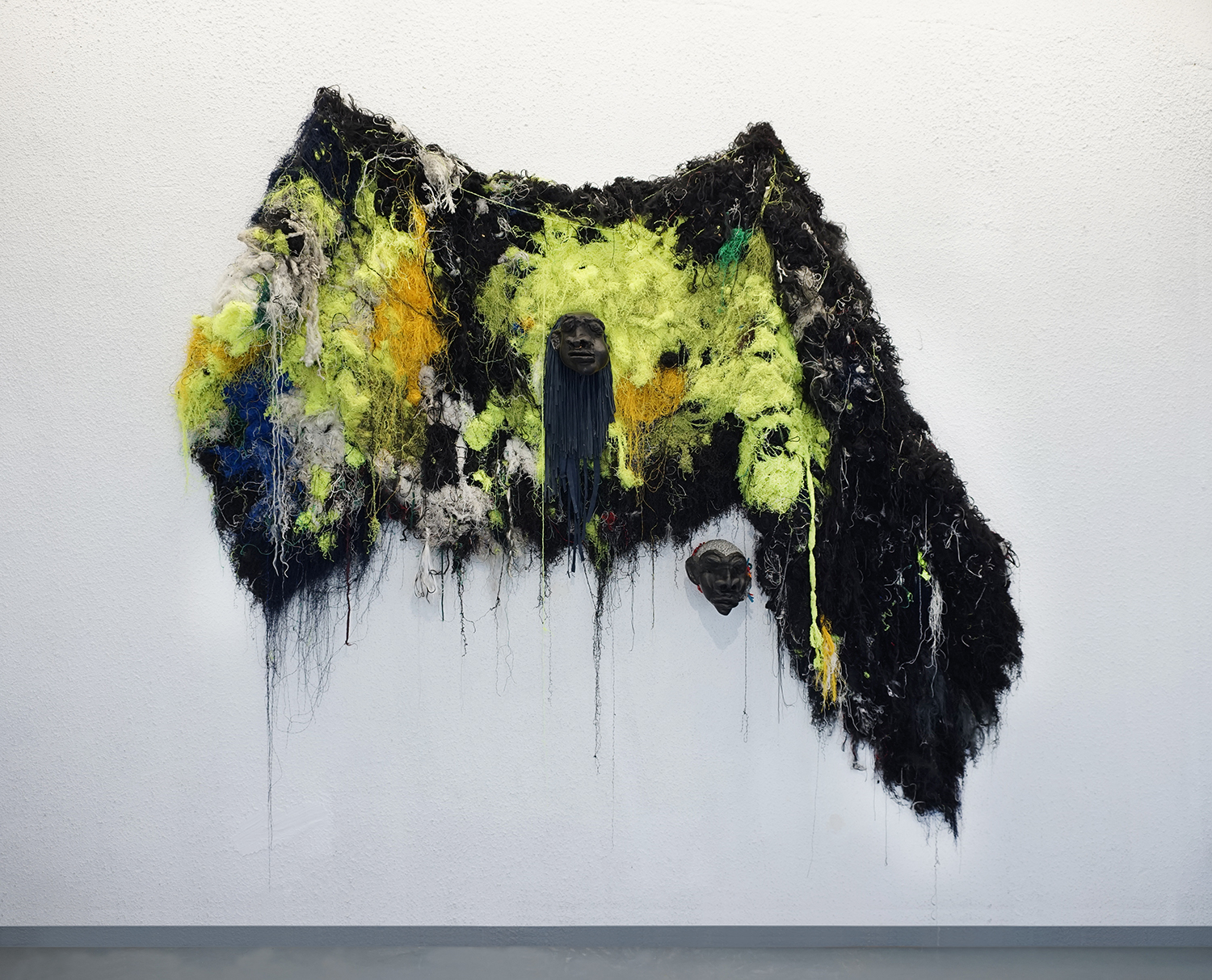
Terrence Musekiwa
Gumbezi rechengetedzo, 2023
Springstone, synthetic material, silk, leather, aluminum, and plastic cable
250 × 210 × 40 cm
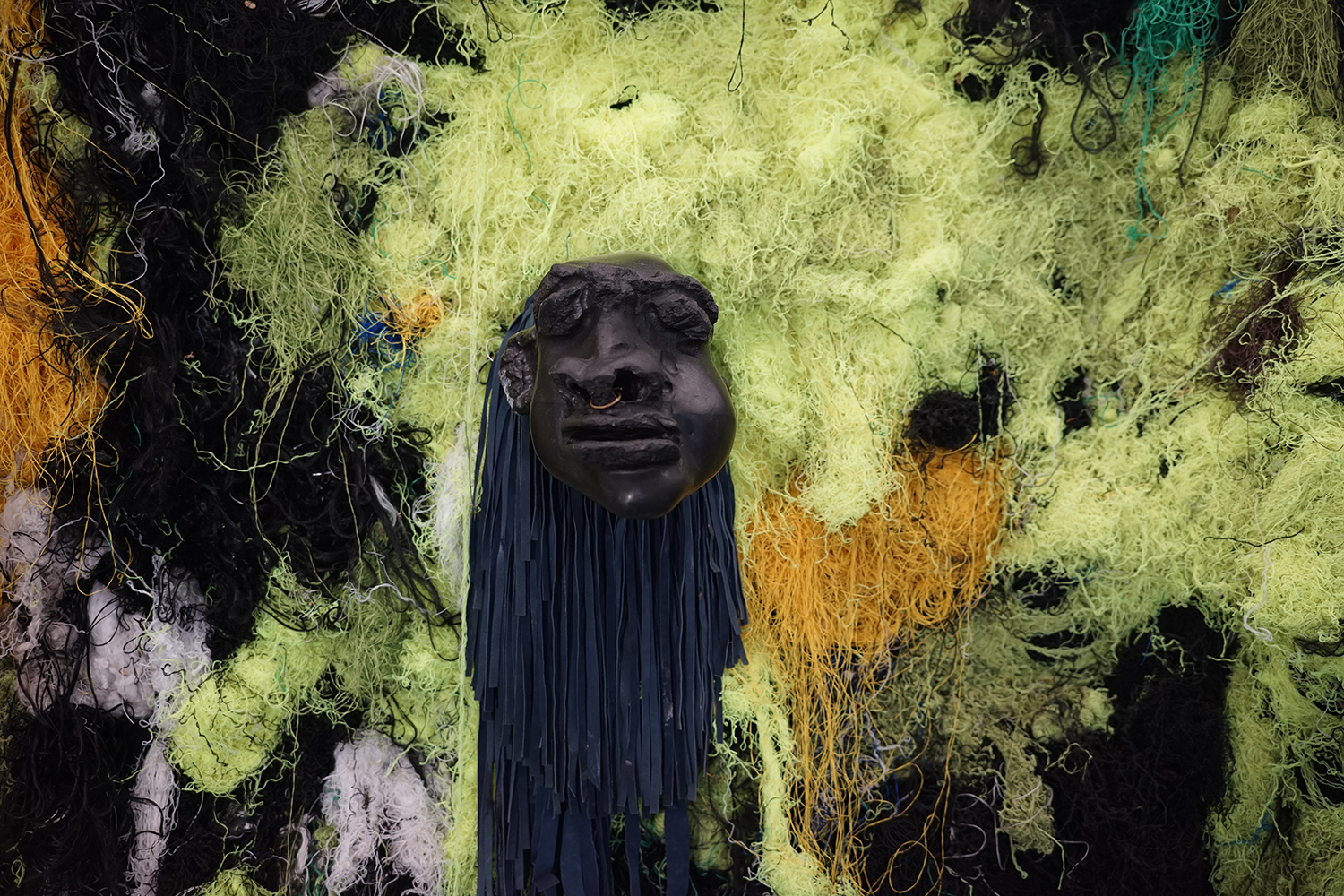
Terrence Musekiwa
Gumbezi rechengetedzo, 2023
Detail
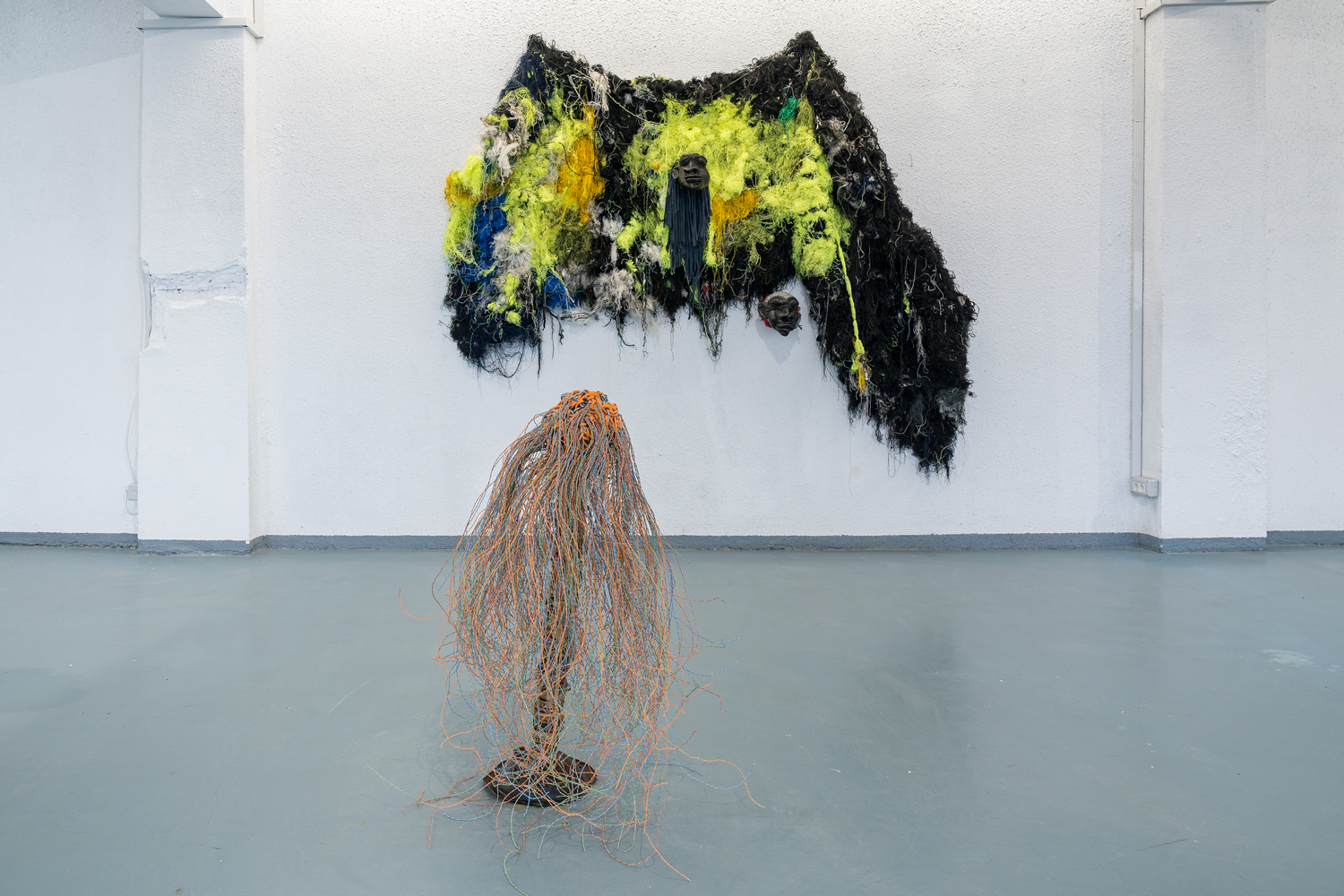
Terrence Musekiwa
Pesvedzero Isingazivikanwe / Influence of the Unknown, 2023
Install View
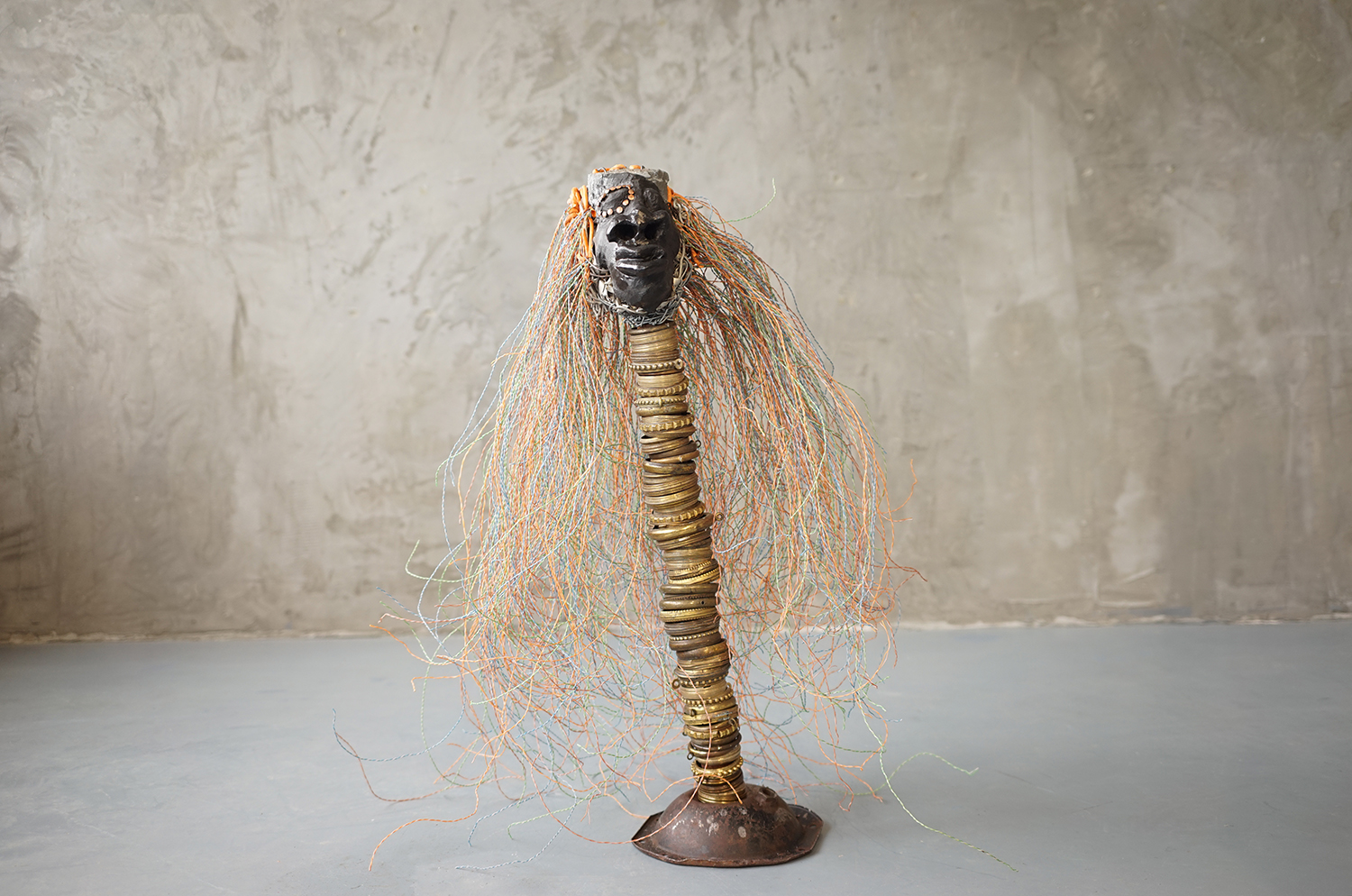
Terrence Musekiwa
Lost in the correct side, 2023
Springstone, internet cables, brass rings, copper, and aluminum
90 × 45 × 30 cm
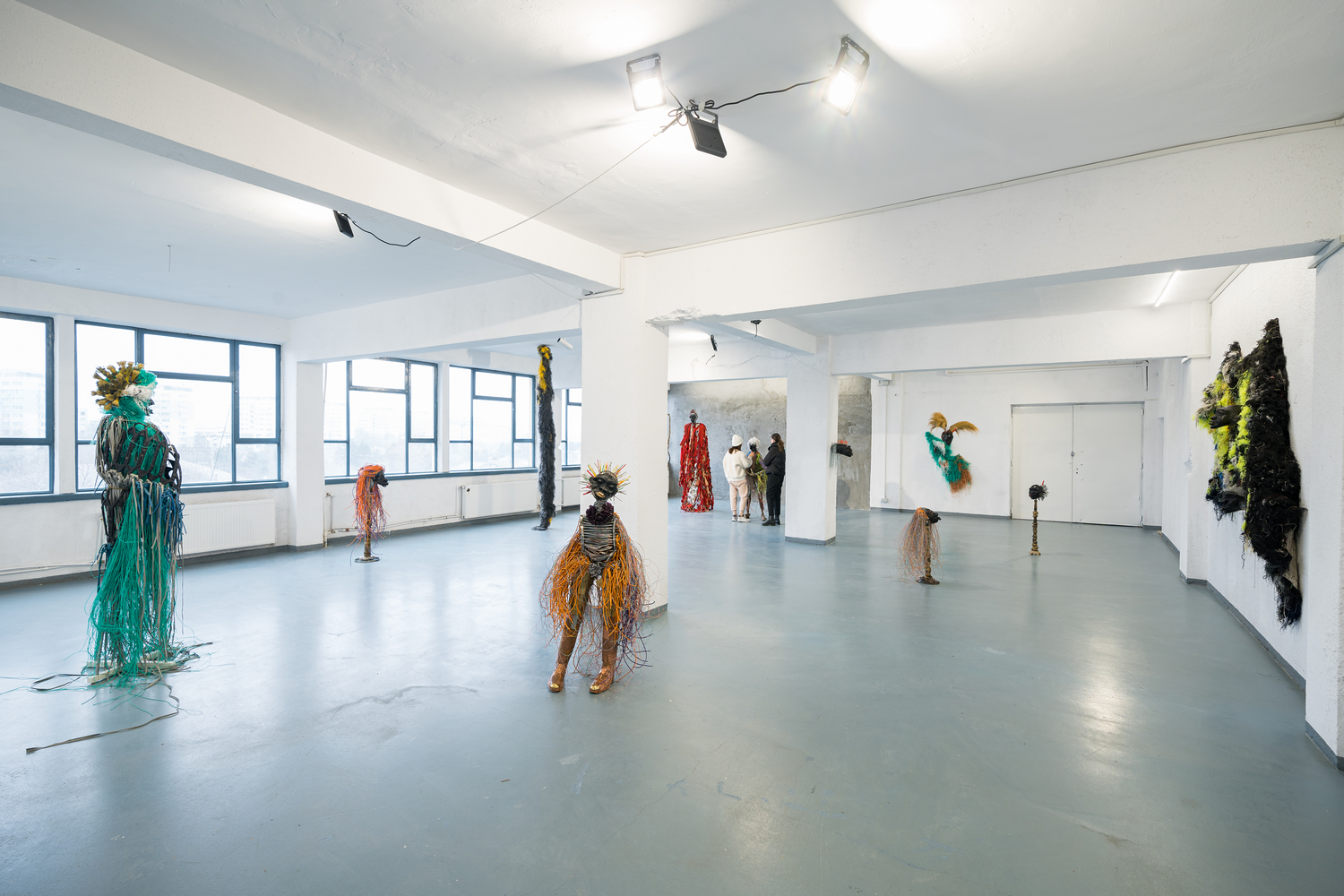
Terrence Musekiwa
Pesvedzero Isingazivikanwe / Influence of the Unknown, 2023
Install View
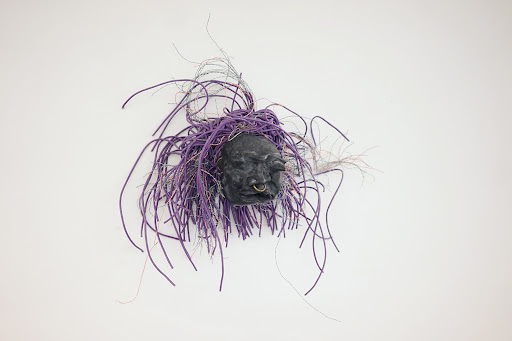
Terrence Musekiwa
Lost in the correct side, 2023
Springstone, internet cables, brass rings, copper, and aluminum
90 × 45 × 30 cm
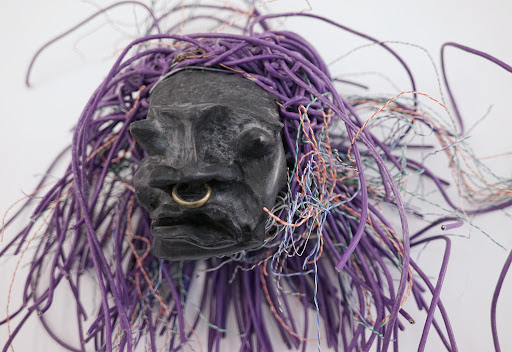
Terrence Musekiwa
Lost in the correct side, 2023
Detail
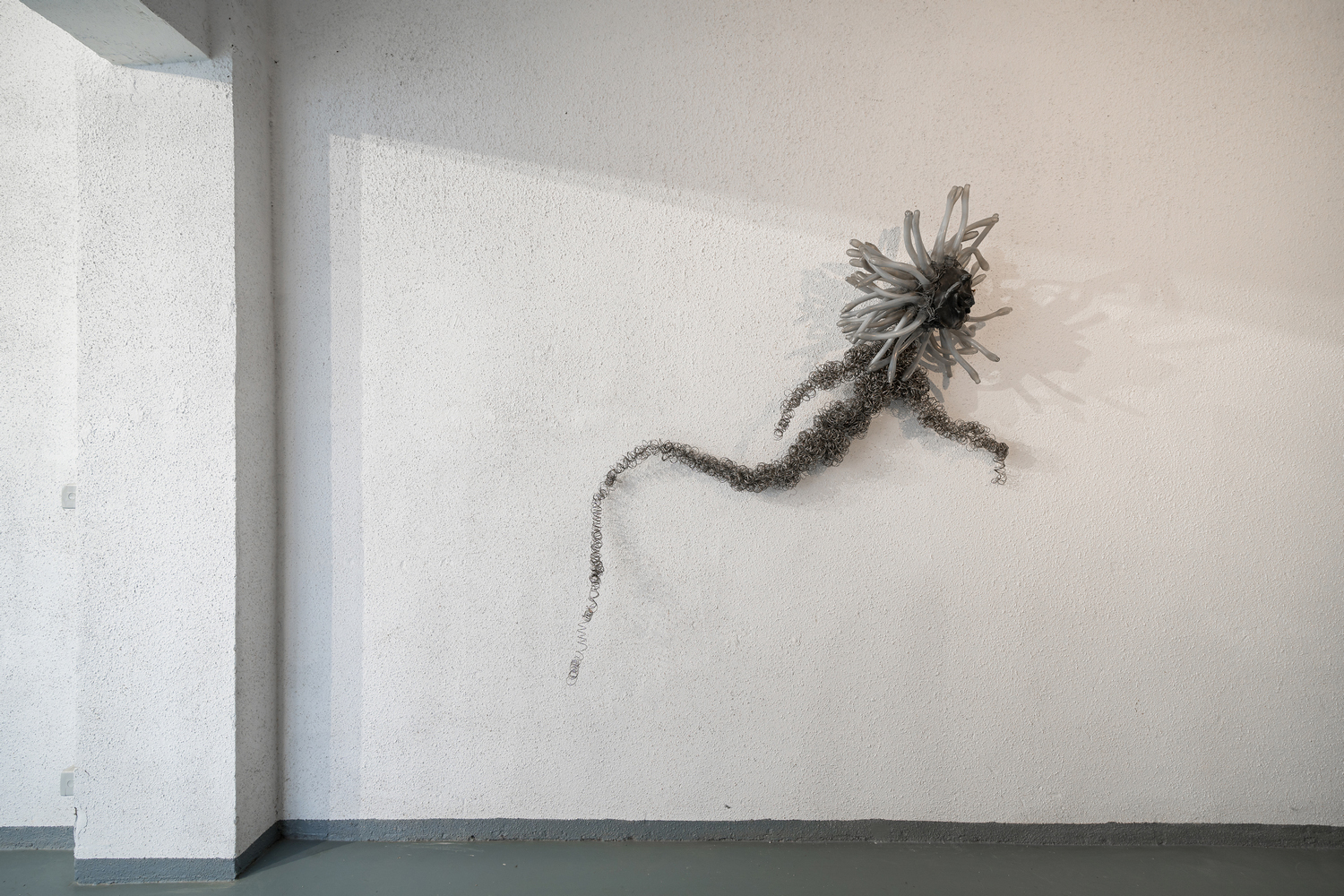
Terrence Musekiwa
Murume ane hurongwa hwakavanzika (A man with a hidden agenda), 2020
Springstone, preformed plastic bottles, aluminum wire
210 × 90 × 40 cm
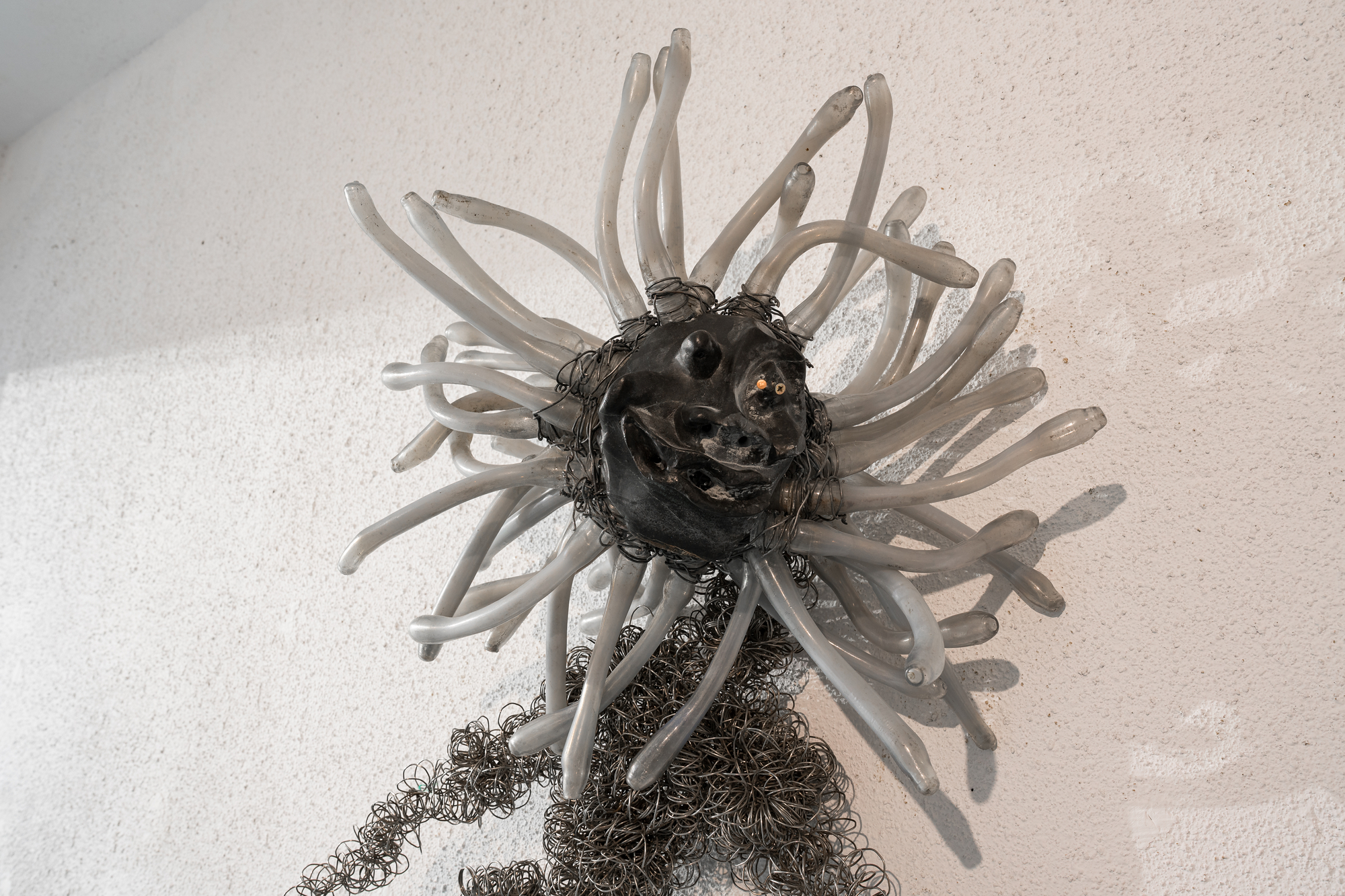
Terrence Musekiwa
Murume ane hurongwa hwakavanzika (A man with a hidden agenda), 2020
Springstone, preformed plastic bottles, aluminum wire
210 × 90 × 40 cm
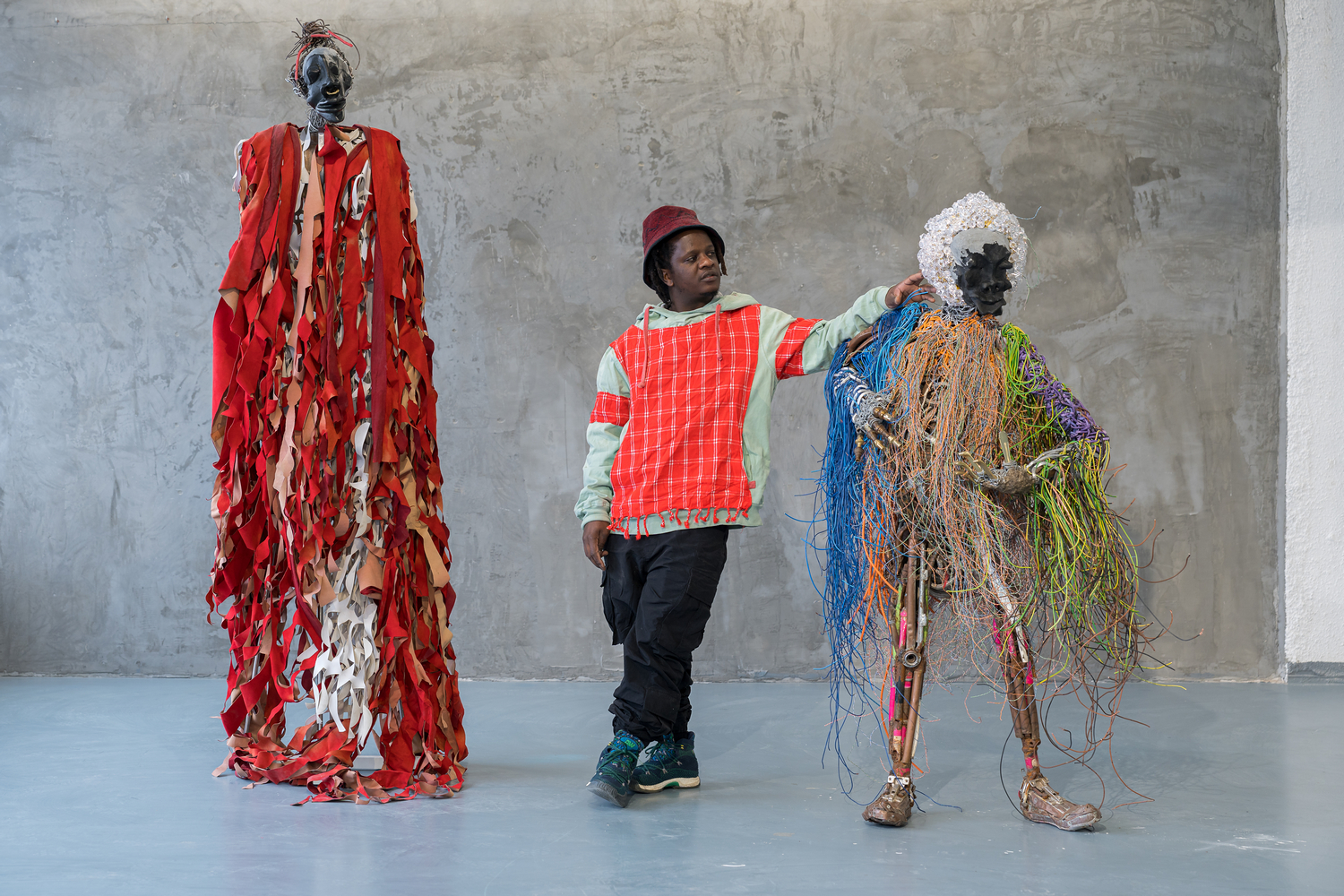
Terrence Musekiwa in his solo show at Catinca Tabacaru Gallery
Catinca Tabacaru Gallery is pleased to announce Pesvedzero Isingazivikanwe / Unknown Influence, Zimbabwean artist Terrence Musekiwa’s third solo with the Gallery and his first exhibition in Bucharest.
Musekiwa’s traditional approach to the toiling of stone is sourced from his Chikaranga ancestry, passed down through his father Kennedy Musekiwa, and evolved throughout his life. Bringing in contemporary methods of sculpting and assemblage, his selection of materials, everyday objects and historical artifacts follows a narrative thread. Syncretism and forms of codification play central roles, often used by Musekiwa to speak to the complex relationship between ecology, history, and current socio-political contexts.
In the Gallery’s vast industrial space in Bucharest, Musekiwa mounts 11 new sculptures whose tangle of materials opens a window into the conceptual space of African maximalism. Many standing above human stature, they are imbued with the artist’s conviction of a tactile connection between the living and ancestral realms.
“Some things, we don’t know them… there are certain energies in our African culture that we follow because if we don’t, in the long run they will cost us.” – Terrence Musekiwa
Musekiwa’s practice stands on this intersection of the inner and outer influences which build our truths and shape our characters. The stone faces of his works, sculpted in the material of his homeland, are rooted in ancestry – his core identity; while the bodies of these works are animated with kaleidoscopic found materials – his Earthly context. Internet cables encased in plastics swirl up through Musekiwa’s metal bodies, cascading and wrapping their tendrils around the humanoid heads donning manifold expressions spanning power, pain, amusement. Using these excess human materials, Musekiwa signals to where civilization stands in time: what we are consuming, discarding, overproducing. The debris of history is inherited; often dormant and unnamed in the collective human psyche. It can be excavated. And so, Musekiwa takes an archeological approach.
In making his sculptures, Musekiwa reflects on his process as similar to one shaping our identities. Our DNA is innately encoded, functioning in parallel with the ceaseless information barraging us through the electric veins of technology, molding our opinions, convincing and shifting our logic. So too, the artist’s hands are programmed by decades of stone carving tradition, movements, methods, and beliefs his brain no longer controls. Then, by transforming each man-made object, transplanting it out of its prior use, Musekiwa adopts the outer language of these materials, using it to endow each sculpture with specificity and personality. What we believe controls our behaviors.
And, beyond the hard labor of working with stone, metals and plastics; beyond the traditional philosophy and historical reference always close to his lips; there is a playfulness that surprises and delights: nitrous oxide canisters turned into hair, a denture smile brushed in gold leaf, and shoulders becoming from a 19th century wooden yoke. As much as historical events known and unknown have shaped our incoming future; so does the experience of seeing constantly shape our present. In Bucharest, on a winter’s night…